 The first thing all three of these incenses have in common is that the contact information is the same post office box in the Mysore District of Karnataka State in India even though all the incenses are presented fairly differently. The second thing is that all three of these Tibetan style incenses have major perfume presences and in that sense are actually a completely different family of incenses than your normal Tibetan, Nepalese or Bhutanese incense. I can’t tell if these are legitimate monasteries or if there’s one company at work here designing these incenses to look authentically Tibetan but their similarities are too strong to discount them all from being a line designed by a Mysore area perfumer/incense factory. Some research on the PO Box shows that a number of Tibetan monasteries use it, and I’m assuming their products all come out of this same, for lack of a better word, “clearinghouse.”
The first thing all three of these incenses have in common is that the contact information is the same post office box in the Mysore District of Karnataka State in India even though all the incenses are presented fairly differently. The second thing is that all three of these Tibetan style incenses have major perfume presences and in that sense are actually a completely different family of incenses than your normal Tibetan, Nepalese or Bhutanese incense. I can’t tell if these are legitimate monasteries or if there’s one company at work here designing these incenses to look authentically Tibetan but their similarities are too strong to discount them all from being a line designed by a Mysore area perfumer/incense factory. Some research on the PO Box shows that a number of Tibetan monasteries use it, and I’m assuming their products all come out of this same, for lack of a better word, “clearinghouse.”
And so to take a quick tangent (if you don’t want to read some of this, just drop to the next picture) because it’s a subject that comes up so a lot, what do we mean by perfumed? Natural? Organic? Synthetic? First of all, I’m (obviously) not a chemist or laboratory expert and the incenses we evaluate here, at best, come with an incomplete list of ingredients and/or various promises of how natural or cruelty free or vegan or whatever the box or marketing material contains. It probably should be understood that these various descriptions tend to be from a give and take between manufacturers and importers. From the perspective of ORS and the things we have learned over the year (mostly rumors and conjecture to be honest), we think it’s as close to certain as we can be that Indian incenses, especially over the last few decades where famous natural scents have been severely depleted, use other, largely unnamed ingredients meant to duplicate natural scents. And we believe that when incense companies say “natural” they may not mean it in the same way Americans do. Say there are naturally produced chemicals from organic materials that are altered in a laboratory to imitate a particular scent, is that something you would consider actually natural or not? I think the concern is generally whether synthetic chemicals (or especially toxic or dangerous chemicals) are used in an incense, and I would think in most Indian incenses, even possibly in some incenses where the word “natural” is used, it’s quite possible, even entirely likely, synthetic chemicals are used to some extent. But again without test results about the only thing I can trust is my natural reaction to an incense that is making me uncomfortable.
A selling point on any incense box isn’t going to be “synthetic chemicals used” because absolutely no one would be buying it. Lhochok Palgeri is described on the box as a “Superior Quality Incense.” Well maybe, but that’s a marketing tool right? It’s also described as “A Tibetan incense purely handmade with authentic herbal ingredients, carefully sourced and handpicked specifically from the sacred Himalayan Ranges.” I don’t see any reasons to believe any of this is untrue but what it’s not saying might be even more important, especially when you get a whiff. Because there’s a huge difference between any incense that does and doesn’t use oils or perfumes of some sort and it’s completely obvious these are being used if you can take the fresh batch of unburned incense and give it a sniff or two. If it’s popping with scent (or smells kind of wet) then oils/perfumes are being used. However, the presence of oils doesn’t necessarily tell you what kind of oils they are, they could be anything from a mix of natural essential oils to synthetic perfumes and all points in between. I’d imagine much of this is based on expense. Lots of essential oils are cheap and probably easily enough used in their natural state. So how do we know what is what? Well for the most part we don’t know. I think many of us who have used incense for a while evaluate the possibility by allergic reactions. Does the aroma get you stuffy or sting your eyes or maybe even make you nauseous? Well some natural ingredients probably do that too, but if your body is telling you all those things then you probably don’t want to keep using them whatever is the case. Think of backflow cones, and the smell that comes from adding chemicals to make the smoke sink instead of rise. How is that making you feel?
And to get back to Lhochok Palgeri, the statement about authentic herbal ingredients can be true while they’re adding synthetic ingredients or chemicals too. Mark my words though, I don’t know if that’s true and if I’m actually being objective, I can literally only guess, but again, it’s often what is not said, not what is. Even when the company may be telling you something, hell even when I am so close to certain on something, I’d still have some room in my head for the possibility it’s not true. I’m afraid unless I see some lab or chemistry report of an incense handled by a trained scientist in aromatics with a list of ingredients, I’m always going to be more reserved in my opinion and not pass through comments that have their facts mixed up. So enough about that…
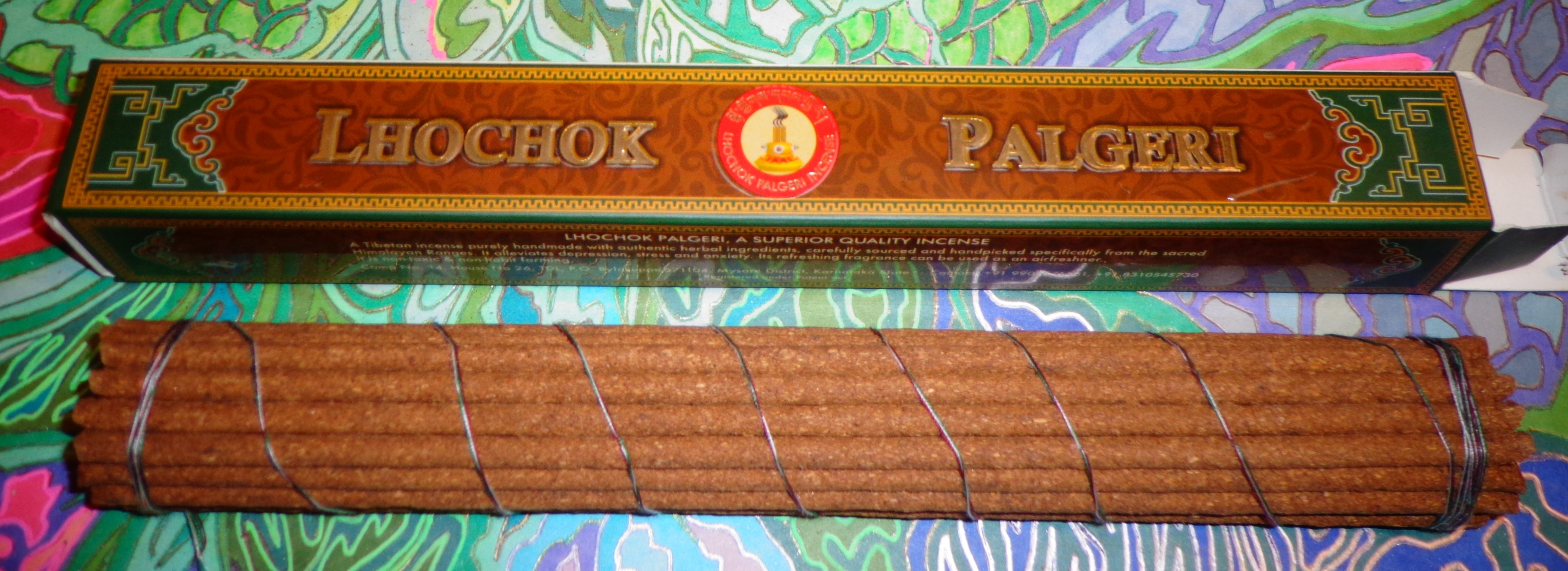 OK now I am really back to Lhochok Palgeri, but I really set this all up because it came in an order from Monkcense, a nice little Etsy shop with a whole bunch of incenses I had not heard of before and the owner was really kind enough to send along a whole bunch of inch long samples of other incenses they carried and after trying over half a dozen of them, I realized they were all like the three incenses I’m going to review here, in fact with samples so short a lot of them actually smelled exactly the same to me. They feel at base traditional Tibetans but they have been practically steroid-infused with some really strong perfume/oil mixes and I was surprised to find that at least so far while I didn’t consider these mixes bad on the face on it, sometimes they aligned really well with the bases and sometimes they set off a whole lot of pinging and ponging. And so I have coined all these as “perfumed traditionals.” Lhochok Palgeri is as good as any other incense to start with in this vein, in the sense that absolutely no ingredients are listed here. This incense actually remind me mostly of the kinds of Indian charcoals that will have mixes that blend florals, cooking herbs and all sorts of other things into incenses that are really hard to parse. Burning this I’m reminded of like dill or celery seed combined with something evergreen and some fancy floral all at once. Some of the aspects I’m not even sure I’ve smelled in a Tibetan incense before, so it starts off being really fascinating. But my gut feeling is strongly wondering what I’m going to feel like after 5 or 10 sticks of this? Is it going to get under my skin or start to irritate me? Because it feels like almost everything in this is dialed up to the loudest volume possible, like nothing was structured to act as foreground or background so it kind of rolls up into white noise. And if you use ash to burn these, these incenses will sometimes transfer this massive aromatic punch to your ash. So despite that this is an original mix, I feel with every stick it’s just a little too powerful or overwhelming, even more so than some of the loudest Indian charcoals and masalas.
OK now I am really back to Lhochok Palgeri, but I really set this all up because it came in an order from Monkcense, a nice little Etsy shop with a whole bunch of incenses I had not heard of before and the owner was really kind enough to send along a whole bunch of inch long samples of other incenses they carried and after trying over half a dozen of them, I realized they were all like the three incenses I’m going to review here, in fact with samples so short a lot of them actually smelled exactly the same to me. They feel at base traditional Tibetans but they have been practically steroid-infused with some really strong perfume/oil mixes and I was surprised to find that at least so far while I didn’t consider these mixes bad on the face on it, sometimes they aligned really well with the bases and sometimes they set off a whole lot of pinging and ponging. And so I have coined all these as “perfumed traditionals.” Lhochok Palgeri is as good as any other incense to start with in this vein, in the sense that absolutely no ingredients are listed here. This incense actually remind me mostly of the kinds of Indian charcoals that will have mixes that blend florals, cooking herbs and all sorts of other things into incenses that are really hard to parse. Burning this I’m reminded of like dill or celery seed combined with something evergreen and some fancy floral all at once. Some of the aspects I’m not even sure I’ve smelled in a Tibetan incense before, so it starts off being really fascinating. But my gut feeling is strongly wondering what I’m going to feel like after 5 or 10 sticks of this? Is it going to get under my skin or start to irritate me? Because it feels like almost everything in this is dialed up to the loudest volume possible, like nothing was structured to act as foreground or background so it kind of rolls up into white noise. And if you use ash to burn these, these incenses will sometimes transfer this massive aromatic punch to your ash. So despite that this is an original mix, I feel with every stick it’s just a little too powerful or overwhelming, even more so than some of the loudest Indian charcoals and masalas.
 Now while Namdroling Monastery Tibetan Herbal Incense is purportedly from a monastery it holds the same postal office box that Lhochok Palgeri has; however, it does look like this monastery is in the same district. This time ingredients are listed: juniper, liquorice, agarwood, myrrh, cinnamon, cardamom, cloves, spikenard, nutmeg, saffron, vetiver, kusum flower, sandalwood powder, and resins. What I noticed right away is the spices like cinnamon, cardamom, cloves and nutmeg were all much more highly concentrated in this than they usually are in a Tibetan incense, most of these are clearly carried on a wave of perfume oil. I don’t imagine that any of these ingredients are cost prohibitive to fake so the strong spice front seems pretty genuine to me, and it is actually quite nice. But even if this oil is natural or mostly natural it is still loud as hell and so up front that it practically lives in your nostrils. And this is coming from someone who has been incense saturated for decades at this point and actually doesn’t mind loud Indian masalas that often overwhelm a good fraction of the community. Think of the kind of cinnamon you’d get from a concentrated bottle of essential oil and imagine firehosing it in all directions. OK I exaggerate of course, but one good way of telling you how powerful this is is lighting two sticks of it at once. Anyway, the point of this once again is subtlety is lost here, or perhaps it is if you don’t have a room big enough for this to dissipate and spread out. And you really need that for an incense so heavy in spice. And believe me I want to like this and actually do on some level, but the perfume is so intense here it almost smells like charry wood or some type of overheating. But after Lhockok Palgeri, it’s hard to really look it at the same as the dozens of other actual Tibetan monastery incenses that, if they use oils at all, do so in a measured way that doesn’t overtake anything going on in the middle or bottom. It feels like there’s a company at play that creates these for monasteries or, well, yeah I won’t go there…
Now while Namdroling Monastery Tibetan Herbal Incense is purportedly from a monastery it holds the same postal office box that Lhochok Palgeri has; however, it does look like this monastery is in the same district. This time ingredients are listed: juniper, liquorice, agarwood, myrrh, cinnamon, cardamom, cloves, spikenard, nutmeg, saffron, vetiver, kusum flower, sandalwood powder, and resins. What I noticed right away is the spices like cinnamon, cardamom, cloves and nutmeg were all much more highly concentrated in this than they usually are in a Tibetan incense, most of these are clearly carried on a wave of perfume oil. I don’t imagine that any of these ingredients are cost prohibitive to fake so the strong spice front seems pretty genuine to me, and it is actually quite nice. But even if this oil is natural or mostly natural it is still loud as hell and so up front that it practically lives in your nostrils. And this is coming from someone who has been incense saturated for decades at this point and actually doesn’t mind loud Indian masalas that often overwhelm a good fraction of the community. Think of the kind of cinnamon you’d get from a concentrated bottle of essential oil and imagine firehosing it in all directions. OK I exaggerate of course, but one good way of telling you how powerful this is is lighting two sticks of it at once. Anyway, the point of this once again is subtlety is lost here, or perhaps it is if you don’t have a room big enough for this to dissipate and spread out. And you really need that for an incense so heavy in spice. And believe me I want to like this and actually do on some level, but the perfume is so intense here it almost smells like charry wood or some type of overheating. But after Lhockok Palgeri, it’s hard to really look it at the same as the dozens of other actual Tibetan monastery incenses that, if they use oils at all, do so in a measured way that doesn’t overtake anything going on in the middle or bottom. It feels like there’s a company at play that creates these for monasteries or, well, yeah I won’t go there…
 The same PO box is listed for Thekchenling Monastery Incense as well; it is apparently marketed by Sera Thekchenling Lachi Society. Which is perhaps a little odd when you consider that Sera Thekchenling Monastery is in Lhasa, Tibet; it is apparently one of the biggest monasteries in Lhasa and something of a tourist stop. But as the incense is still part of this family of incenses with the perfumes, it is certainly curious about how all this works. Unfortunately, there doesn’t appear to be an ingredient list on this one, but it is definitely quite distinct from the Namdroling. Thekchenling Monastery Incense goes for what feels like an herbal-floral mix, one not terribly far off the Lhachok Palgeri. There are some obvious woods on the bottom, but just like with the other two, everything else in the mix feels pushed up front due to the weight of the oil mix. Because of this it’s very hard to parse anything specifically. My thoughts were sort of like somewhere between a ganden grass/mild cooking herb meets a very perfumed white flower floral mix. In fact what strikes me as so odd about these three incenses is the mix of traditional and modern. I should also mention that after this went out I could still smell the afterscent of this incense, even after giving some time in between sticks, louder than the one I was trying to remember. That is a lot of oil if it’s going into the ash and staying there.
The same PO box is listed for Thekchenling Monastery Incense as well; it is apparently marketed by Sera Thekchenling Lachi Society. Which is perhaps a little odd when you consider that Sera Thekchenling Monastery is in Lhasa, Tibet; it is apparently one of the biggest monasteries in Lhasa and something of a tourist stop. But as the incense is still part of this family of incenses with the perfumes, it is certainly curious about how all this works. Unfortunately, there doesn’t appear to be an ingredient list on this one, but it is definitely quite distinct from the Namdroling. Thekchenling Monastery Incense goes for what feels like an herbal-floral mix, one not terribly far off the Lhachok Palgeri. There are some obvious woods on the bottom, but just like with the other two, everything else in the mix feels pushed up front due to the weight of the oil mix. Because of this it’s very hard to parse anything specifically. My thoughts were sort of like somewhere between a ganden grass/mild cooking herb meets a very perfumed white flower floral mix. In fact what strikes me as so odd about these three incenses is the mix of traditional and modern. I should also mention that after this went out I could still smell the afterscent of this incense, even after giving some time in between sticks, louder than the one I was trying to remember. That is a lot of oil if it’s going into the ash and staying there.
So ultimately these are not incenses I would really classify as monastery incenses or even traditionals. Some of what I’m smelling I would be hard pressed to be found in an old recipe, there is just too much in the way of the kind of modern floral scents you might find in Shoyeido or Nippon Kodo perfumed sticks for that. In a way the fusion is definitely kind of interesting, but I also find it pretty exhausting, loud and relentless. Some of this is just the sheer power of the incenses, but it’s also this sort of weird conflict between pretty florals and the rugged herbal/woody catalog of most Tibetan incenses. I’m always left questioning whether all this oil on top is drowning anything out as well. Ultimately by the time one of these long sticks burns down I feel that it’s kind of worn out its welcome, I’m starting to pay more attention to how I’m feeling than the aroma itself. What this meant for me is the dozen or more incenses in this vein I tried samples of I’m not likely to buy full boxes of or review because the fatigue would ultimately be grinding. Use sparingly if you try them and experiment first with how much space you have as these are likely to be too much for a lot of ORS readers.
 It has been a really long time since I did new reviews of Nepali or Tibetan-style Indian incenses. In the current era I don’t know if there is one dominant shopping point for these types of incenses like there was when Essence of the Ages was active, although Hither & Yon in Hawaii is a good source for lines like Dhoop Factory and you can usually find a lot of the more common Nepali incenses through places like Incense Warehouse. The problem, which is something I don’t think you find in actual Tibetan incenses, is there are a lot of poor Nepali incenses. When I explored them back in the 00s I ended up getting rid of a great deal of them because they were basically just unpleasant and cheap woody incenses without much in the way of aroma. The worst felt like bad perfumes on junk sawdust. But of course this isn’t true of all of them (several of the Dhoop Factory incenses are upper echelon Tibetan-style incenses in my book). Nowadays there are a number of smaller shops on the internet and across Etsy that actually show there are multiple traditions (or maybe exporters) of these sorts of incenses. I even dug up what appears to be a rather interesting line of perfumed Tibetan-style incenses sources in India. So I got busy and have ordered quite a few Nepali incenses, just mostly going on intuition to pick things out. Along the way I’ve also rediscovered sources for things I reviewed way back and will update those accordingly. The first two here are incenses handmade in Nepal for California’s Chagdud Gonpa Foundation. Both of these can be found at the
It has been a really long time since I did new reviews of Nepali or Tibetan-style Indian incenses. In the current era I don’t know if there is one dominant shopping point for these types of incenses like there was when Essence of the Ages was active, although Hither & Yon in Hawaii is a good source for lines like Dhoop Factory and you can usually find a lot of the more common Nepali incenses through places like Incense Warehouse. The problem, which is something I don’t think you find in actual Tibetan incenses, is there are a lot of poor Nepali incenses. When I explored them back in the 00s I ended up getting rid of a great deal of them because they were basically just unpleasant and cheap woody incenses without much in the way of aroma. The worst felt like bad perfumes on junk sawdust. But of course this isn’t true of all of them (several of the Dhoop Factory incenses are upper echelon Tibetan-style incenses in my book). Nowadays there are a number of smaller shops on the internet and across Etsy that actually show there are multiple traditions (or maybe exporters) of these sorts of incenses. I even dug up what appears to be a rather interesting line of perfumed Tibetan-style incenses sources in India. So I got busy and have ordered quite a few Nepali incenses, just mostly going on intuition to pick things out. Along the way I’ve also rediscovered sources for things I reviewed way back and will update those accordingly. The first two here are incenses handmade in Nepal for California’s Chagdud Gonpa Foundation. Both of these can be found at the 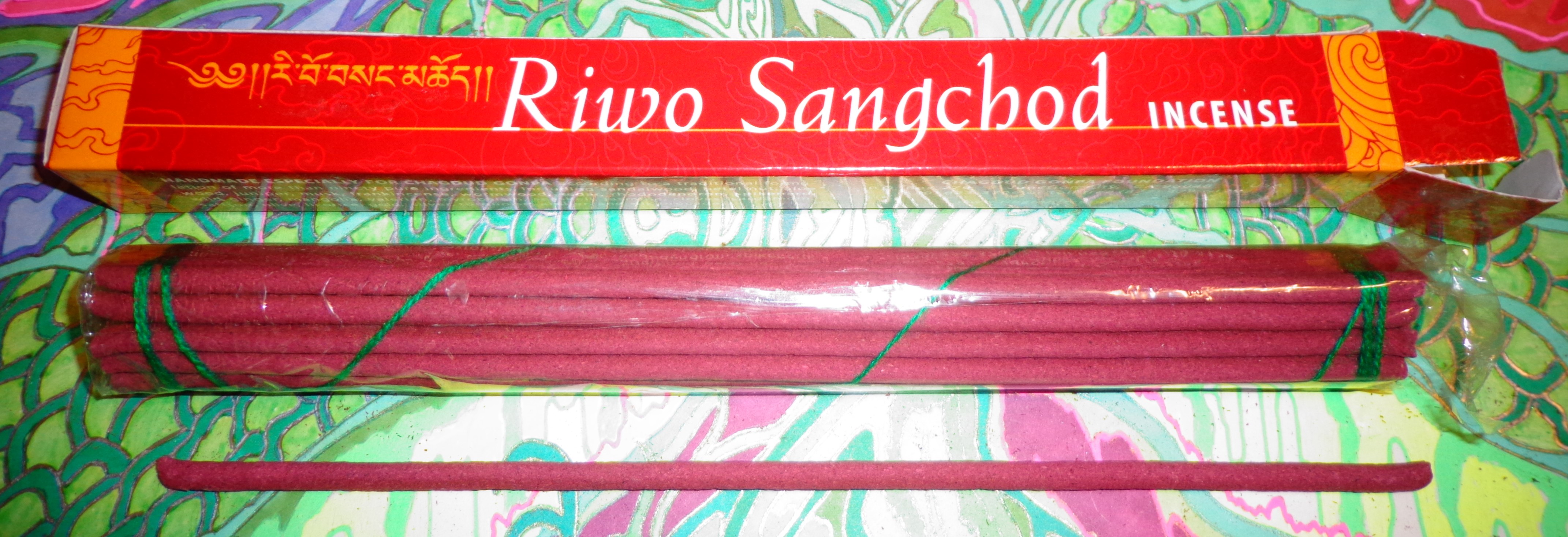
 Perhaps even more impressive than the Riwo Sangchod is Chagdud Gonpa Foundations’s
Perhaps even more impressive than the Riwo Sangchod is Chagdud Gonpa Foundations’s  This is the final installment for the most recent batch of Epika Earth incenses I received in my most recent Etsy order. They have so, so many more sticks and other goodies at their actual website and I am absolutely sure I liked most of their offerings enough to go for another order again in the future. There is something really warm and comforting about a lot of them. Perhaps its because so many of their incenses are essential oil mixes, but I like how these often create almost mythical libations, like you’re holding some amazing drink in your hand. The last group of these incenses are a couple that look like they are part of a Sacred line, a couple that are not part of any line and look like standards, and then a few backflow cones were also sent which are a bit more difficult to talk about as I don’t like the format while on the other hand these would likely be tremendously good cones if they weren’t.
This is the final installment for the most recent batch of Epika Earth incenses I received in my most recent Etsy order. They have so, so many more sticks and other goodies at their actual website and I am absolutely sure I liked most of their offerings enough to go for another order again in the future. There is something really warm and comforting about a lot of them. Perhaps its because so many of their incenses are essential oil mixes, but I like how these often create almost mythical libations, like you’re holding some amazing drink in your hand. The last group of these incenses are a couple that look like they are part of a Sacred line, a couple that are not part of any line and look like standards, and then a few backflow cones were also sent which are a bit more difficult to talk about as I don’t like the format while on the other hand these would likely be tremendously good cones if they weren’t. So first of all we have the Celebration of Life stick (part of the Sacred line), which is different but obviously related in an aromatic way to the
So first of all we have the Celebration of Life stick (part of the Sacred line), which is different but obviously related in an aromatic way to the 
 The
The 
 Epika Earth were also kind enough to send no less than three different kinds of backflow cones. As I offered to review their incenses prior to their seeing the information on our website, I thought I’d use this opportunity to talk about these types of cones first as they’ve grown in popularity since they started showing up however many years back. The simple idea for a backflow cone is a hole is drilled down the center and “something” is added to the mix in order to make the smoke heavy enough to come down through the hole and drift slowly down any number of artistically designed backflow holders. It’s absolutely understandable why people would think this is cool, as smoke pouring from a ceramic chimney or dragon’s mouth is a neat effect. I even bought a cool dragon backflow holder which I managed to break in the middle of these reviews, chipping off just the right spot (one of the dragon wings) that should have held the smoke in. But the thing is, even in practice you have to do a lot of shifting and have a lot of patience for the smoke of a burning backflow cone to make it all the way down to the bottom of a cascade. For me the smoke never got farther than the first slide after the dragon’s mouth and I think I got one cone to get all the way down to the bottom once.
Epika Earth were also kind enough to send no less than three different kinds of backflow cones. As I offered to review their incenses prior to their seeing the information on our website, I thought I’d use this opportunity to talk about these types of cones first as they’ve grown in popularity since they started showing up however many years back. The simple idea for a backflow cone is a hole is drilled down the center and “something” is added to the mix in order to make the smoke heavy enough to come down through the hole and drift slowly down any number of artistically designed backflow holders. It’s absolutely understandable why people would think this is cool, as smoke pouring from a ceramic chimney or dragon’s mouth is a neat effect. I even bought a cool dragon backflow holder which I managed to break in the middle of these reviews, chipping off just the right spot (one of the dragon wings) that should have held the smoke in. But the thing is, even in practice you have to do a lot of shifting and have a lot of patience for the smoke of a burning backflow cone to make it all the way down to the bottom of a cascade. For me the smoke never got farther than the first slide after the dragon’s mouth and I think I got one cone to get all the way down to the bottom once.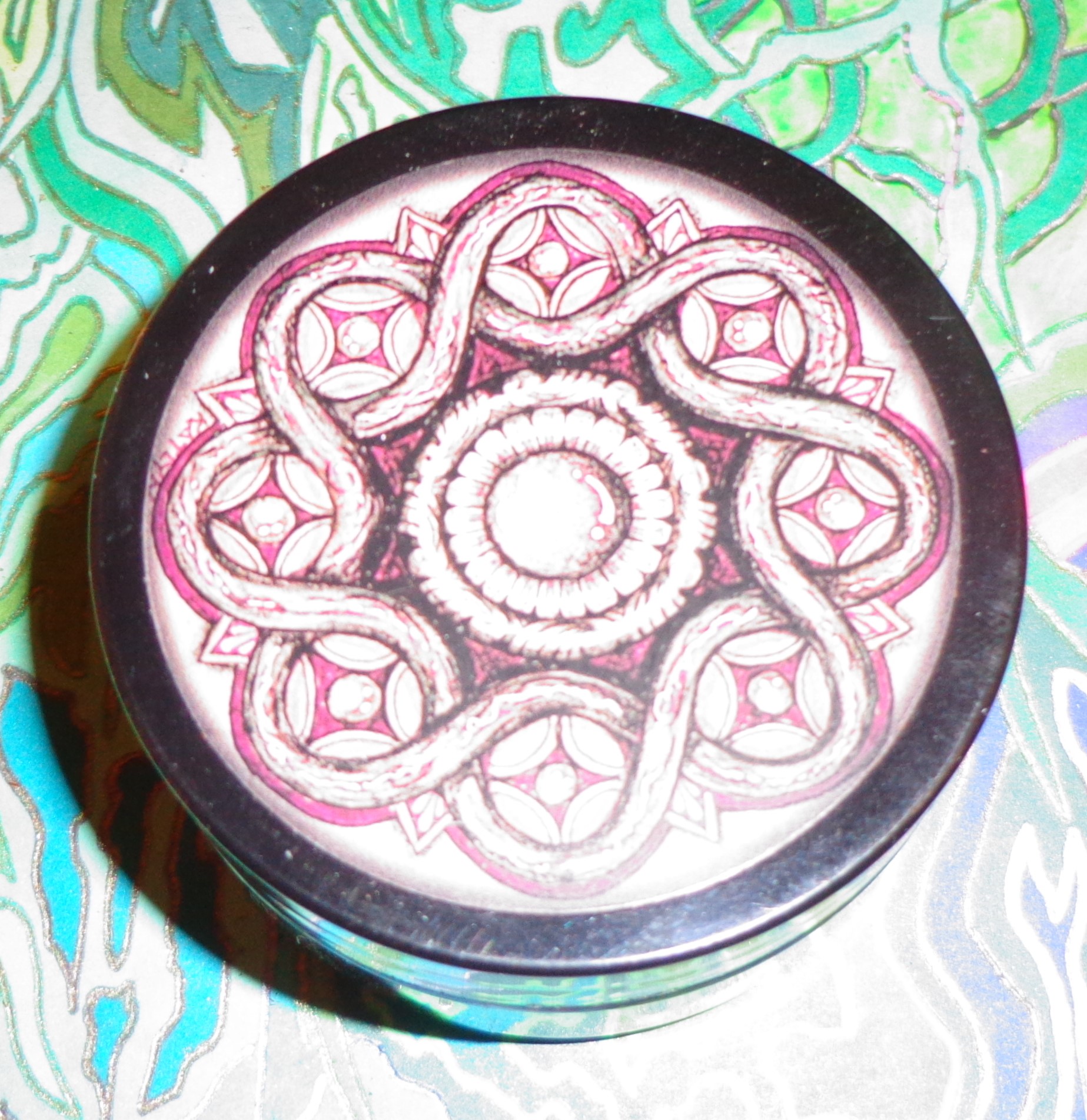 This was going to be a bit larger of a
This was going to be a bit larger of a 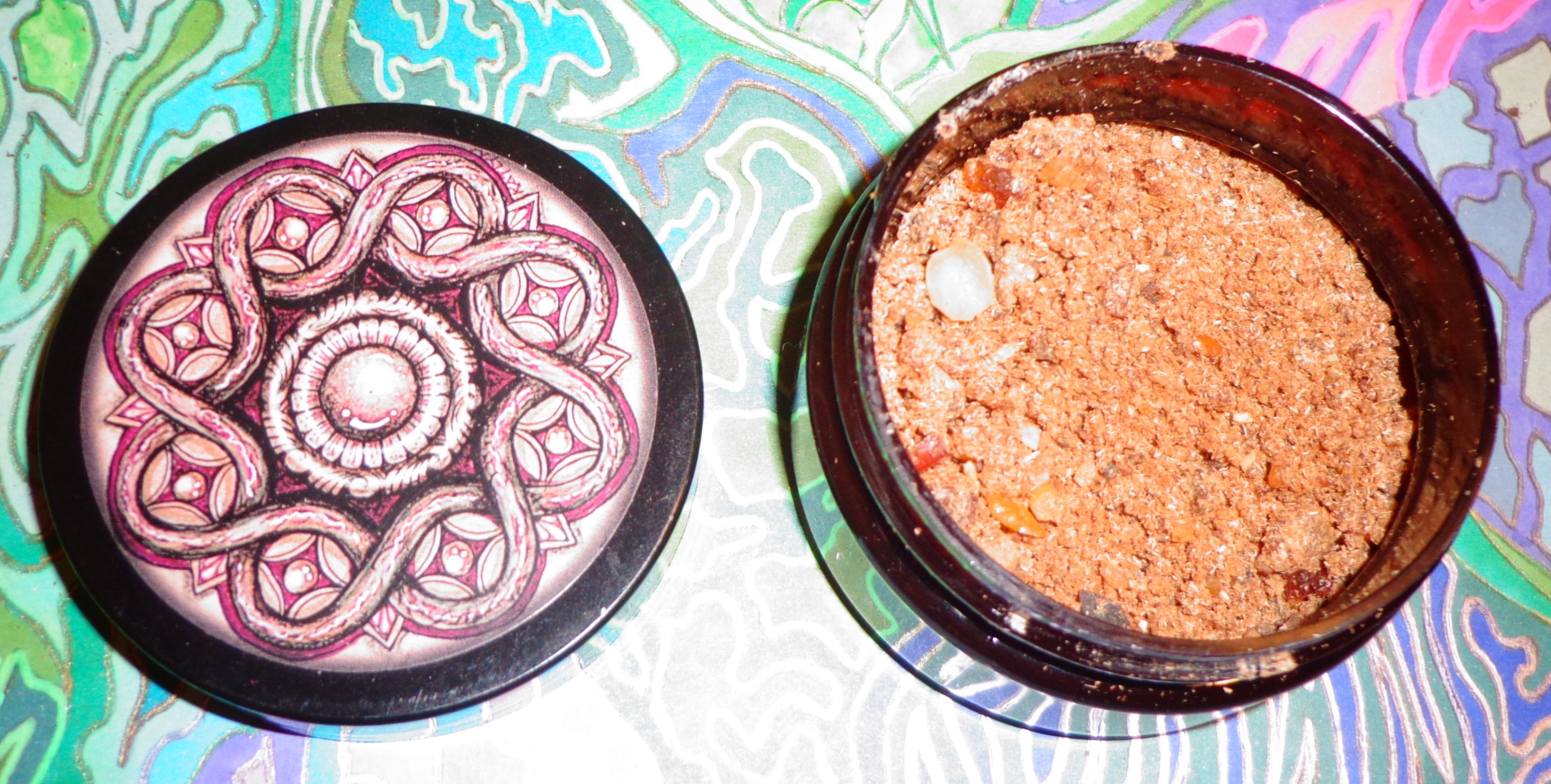 But with incense, you know the prize attributes of good aloeswood and sandalwood, but I’ve always been a big fan of cedarwood as well, possibly because depending on the type of cedar it can be quite different from incense to incense. Katlyn’s imaginative take on the hope chest, which sort of evokes great fantasy novels where some kids find their grandparent’s secret room and see this big chest in the middle, is actually quite simple, listing only camphor, cedar, juniper, kua myrrh and chios mastic. This gives it a sort of half wood/half resin feel to it with the camphor and cedar right to the front and the resins creating a base for these scents. The chios mastic actually had me thinking of the more citrus-leaning frankincenses until I saw this list, but I like the way the resins really mostly point at either the rest of this secret room or maybe the secrets in the chest. They lean somewhere close to lemon or grapefruit and I really like the way they combine with the wood for a bit of spiciness. The cedar feels like the scent we’re largely used to in the western US, unless I’m mistaken, but the camphor kind of magnifies the aromatics quite a bit (don’t get me started on camphor, one of my favorites!), it has such power and is so evocative of antique storage, largely due to its use in insect repellents left in closets (or chests!) I’d imagine a lot of the juniper plays its way in this mix as well.
But with incense, you know the prize attributes of good aloeswood and sandalwood, but I’ve always been a big fan of cedarwood as well, possibly because depending on the type of cedar it can be quite different from incense to incense. Katlyn’s imaginative take on the hope chest, which sort of evokes great fantasy novels where some kids find their grandparent’s secret room and see this big chest in the middle, is actually quite simple, listing only camphor, cedar, juniper, kua myrrh and chios mastic. This gives it a sort of half wood/half resin feel to it with the camphor and cedar right to the front and the resins creating a base for these scents. The chios mastic actually had me thinking of the more citrus-leaning frankincenses until I saw this list, but I like the way the resins really mostly point at either the rest of this secret room or maybe the secrets in the chest. They lean somewhere close to lemon or grapefruit and I really like the way they combine with the wood for a bit of spiciness. The cedar feels like the scent we’re largely used to in the western US, unless I’m mistaken, but the camphor kind of magnifies the aromatics quite a bit (don’t get me started on camphor, one of my favorites!), it has such power and is so evocative of antique storage, largely due to its use in insect repellents left in closets (or chests!) I’d imagine a lot of the juniper plays its way in this mix as well. 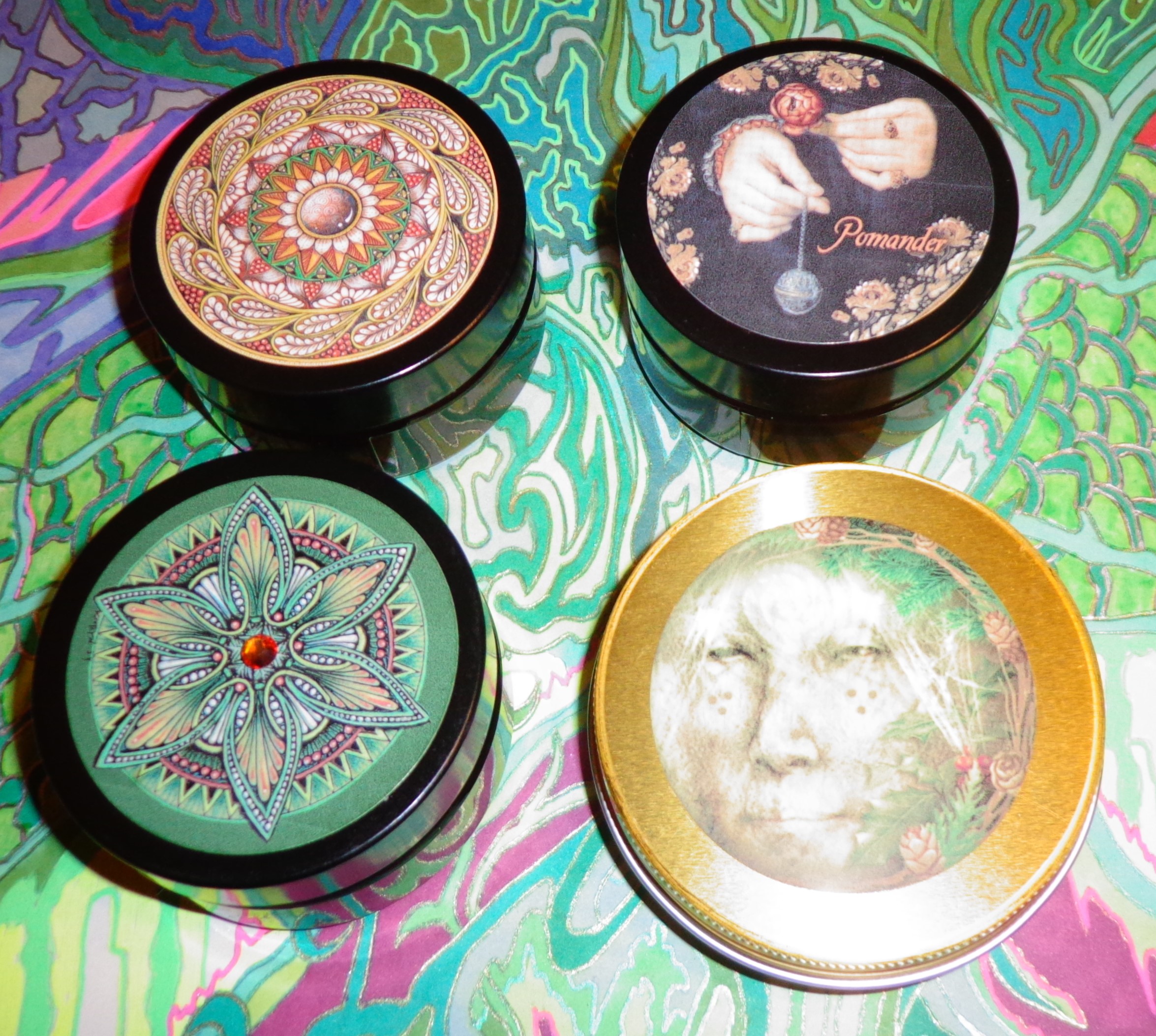
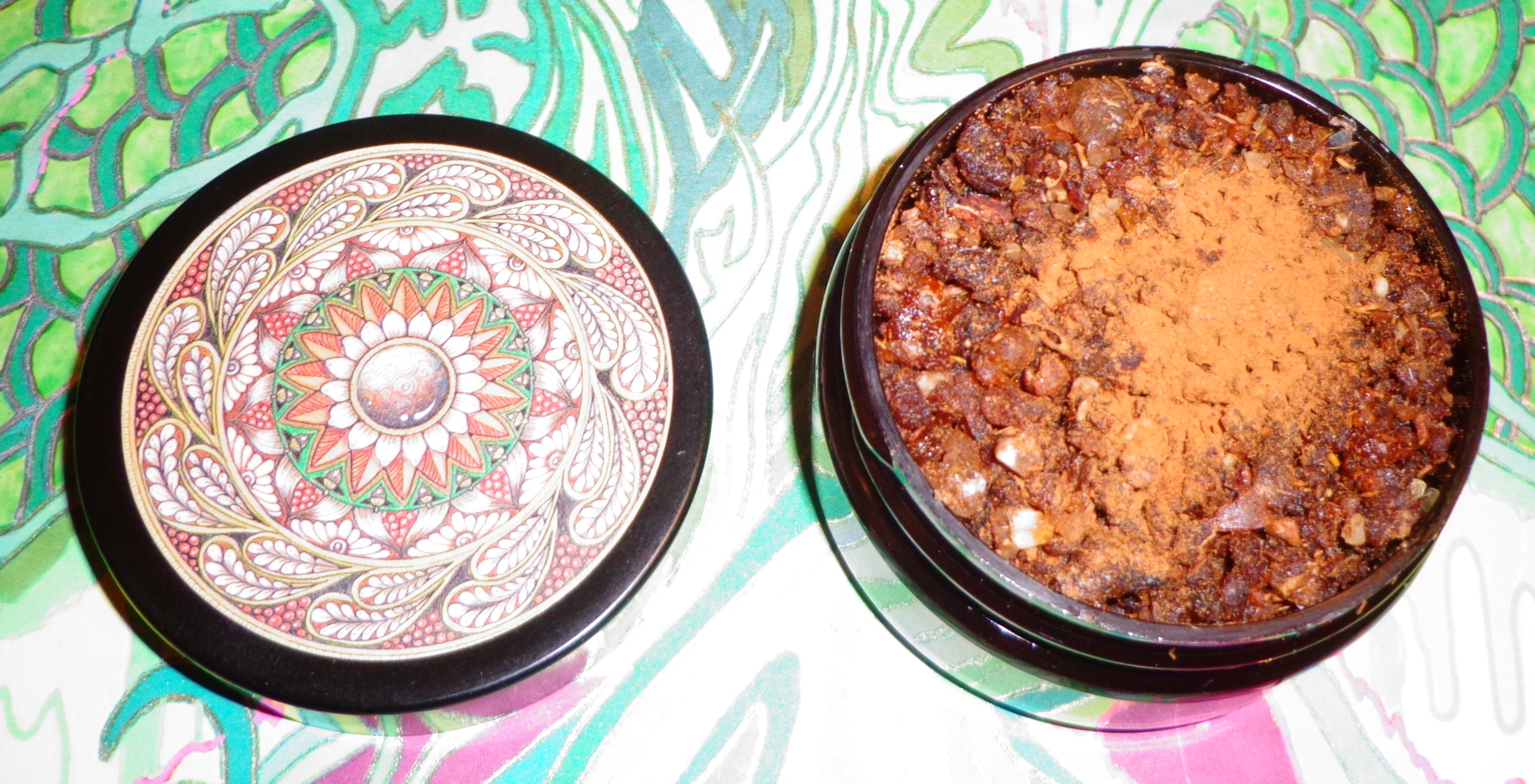 But before we get to the winter incenses, let’s pop back to the autumn for Mermade’s
But before we get to the winter incenses, let’s pop back to the autumn for Mermade’s 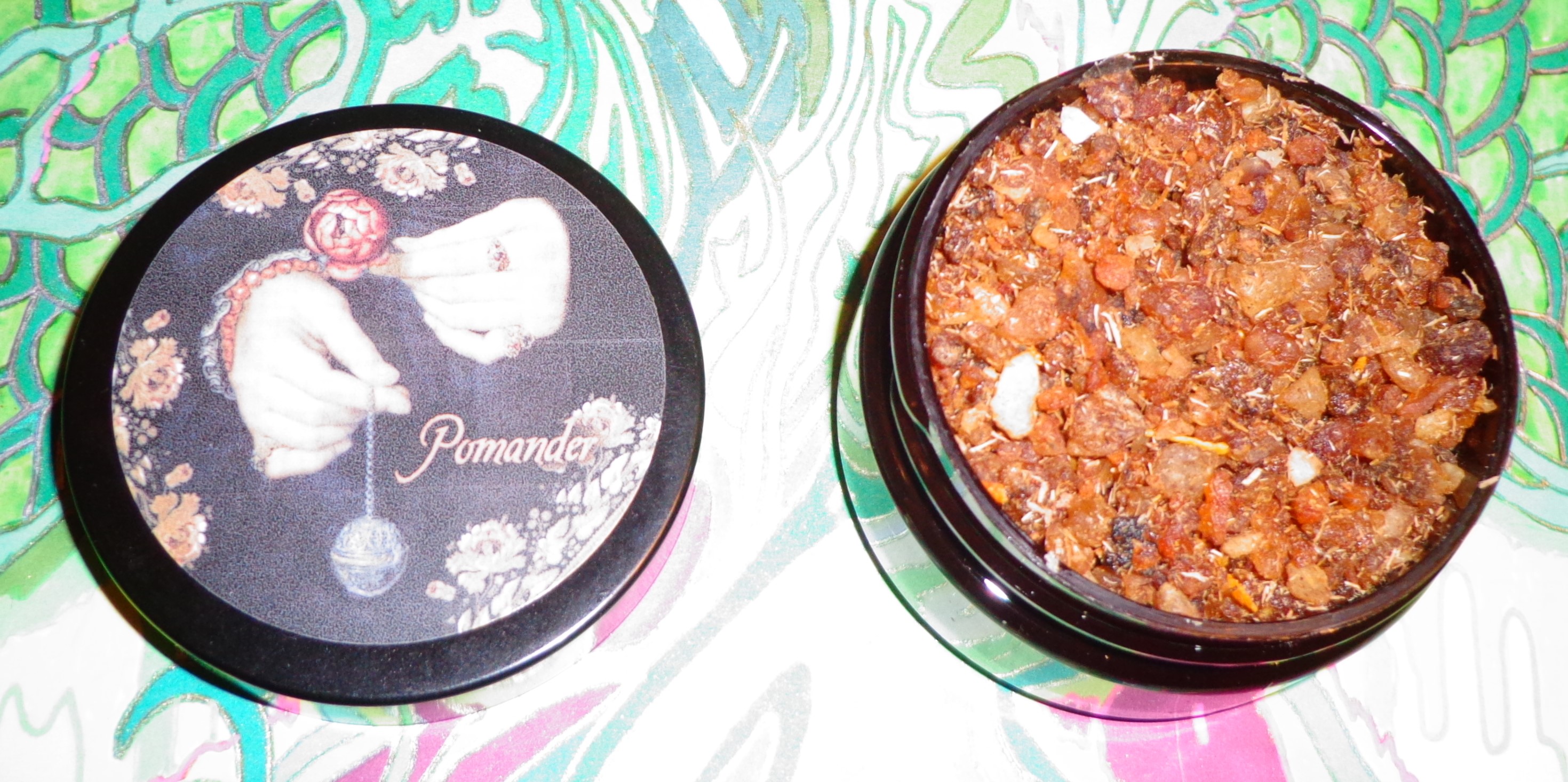 I have probably brought this up before (I seem to remember doing so recently with the Temple of Incense Festive Kiss which is certainly in the same spirit) but one of my early memories was a recipe my mom made called “spiced tea.” It was a very 70s sort of thing with Tang powder, Lipton tea and spices. It had loads of sugar and smelled amazing so of course I loved it. Mermade’s
I have probably brought this up before (I seem to remember doing so recently with the Temple of Incense Festive Kiss which is certainly in the same spirit) but one of my early memories was a recipe my mom made called “spiced tea.” It was a very 70s sort of thing with Tang powder, Lipton tea and spices. It had loads of sugar and smelled amazing so of course I loved it. Mermade’s 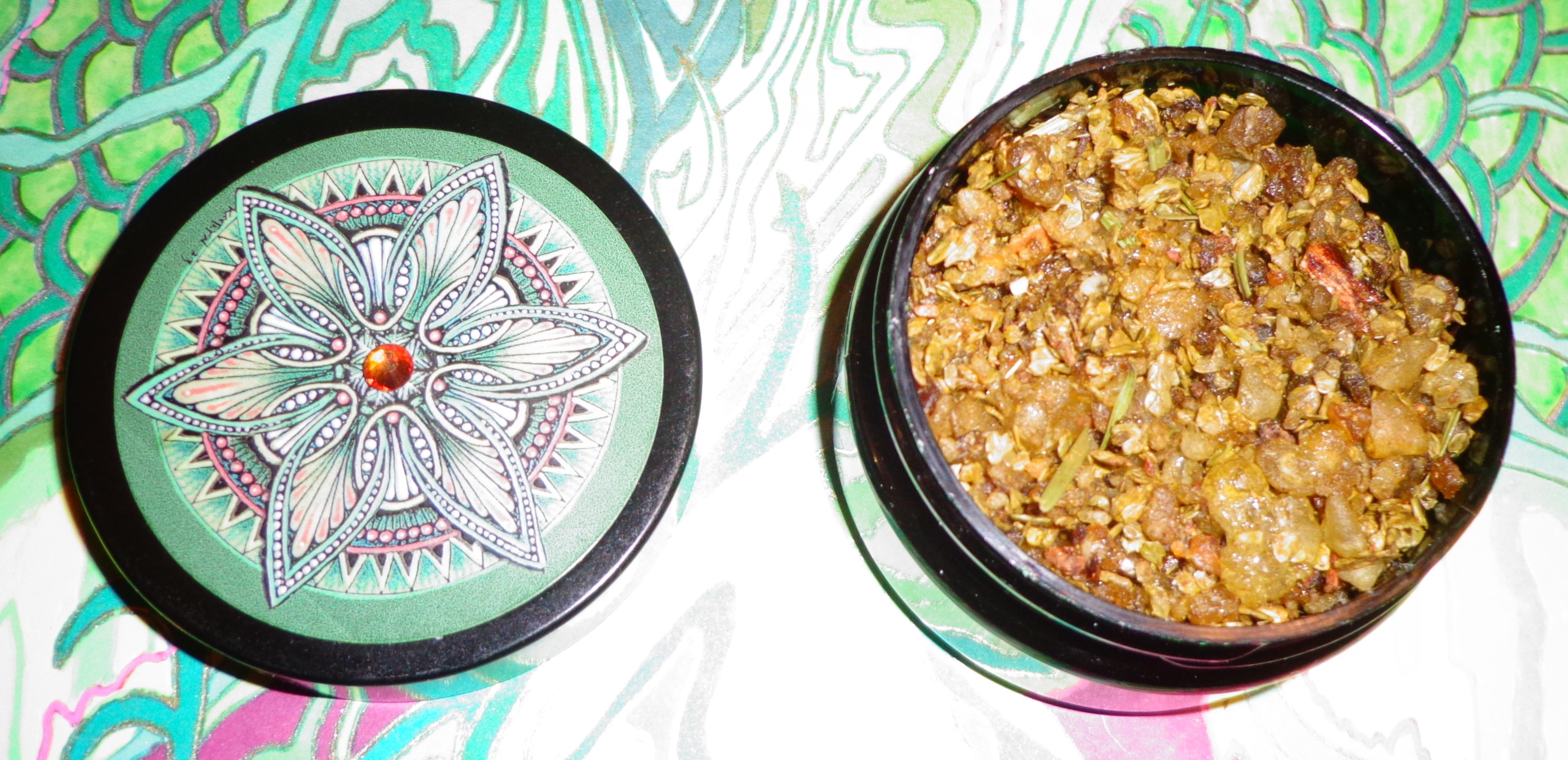
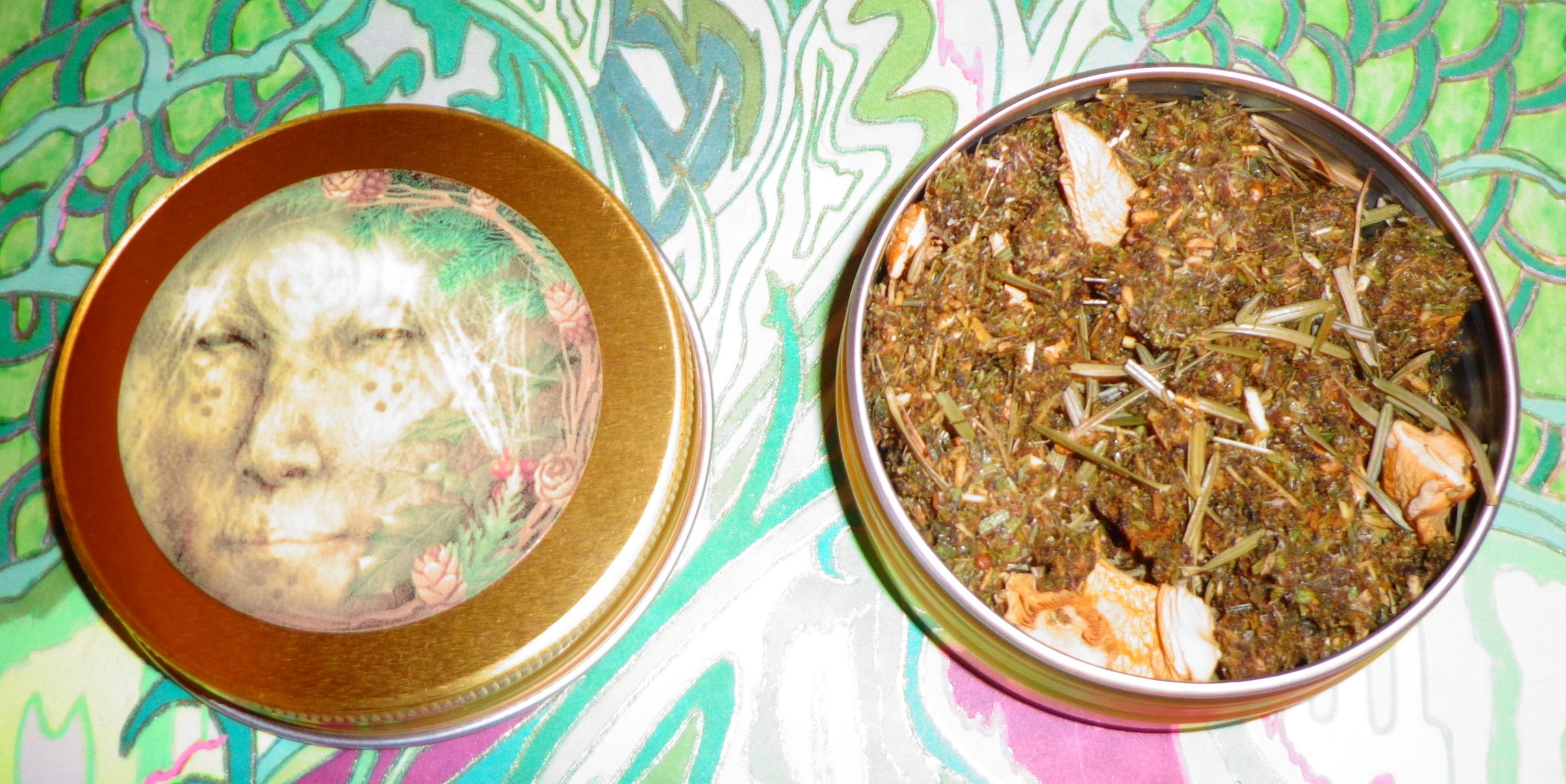 And not terribly far from Winter Wreath is the Espirit de la Nature offering
And not terribly far from Winter Wreath is the Espirit de la Nature offering  Bhutan’s incense tradition is interesting in that while it may fall under the larger heading of Tibetan incenses, Bhutanese style incenses are rarely found outside of the country on their own, even in Tibet, Nepal or India. Within the country the styles actually make something of a narrow range. The primary style is a stick with a greater tensile strength than most Tibetan incenses and usually has a red color than ranges from a deep maroon to sticks a bit closer to pink or purple. While this can vary a bit, with about 20% of incenses being a tan color and maybe 2% being surprising variations, the red stick Bhutanese incense is the country’s mainstay, and it’s a mainstay that rarely varies even when different companies are formulating them.
Bhutan’s incense tradition is interesting in that while it may fall under the larger heading of Tibetan incenses, Bhutanese style incenses are rarely found outside of the country on their own, even in Tibet, Nepal or India. Within the country the styles actually make something of a narrow range. The primary style is a stick with a greater tensile strength than most Tibetan incenses and usually has a red color than ranges from a deep maroon to sticks a bit closer to pink or purple. While this can vary a bit, with about 20% of incenses being a tan color and maybe 2% being surprising variations, the red stick Bhutanese incense is the country’s mainstay, and it’s a mainstay that rarely varies even when different companies are formulating them.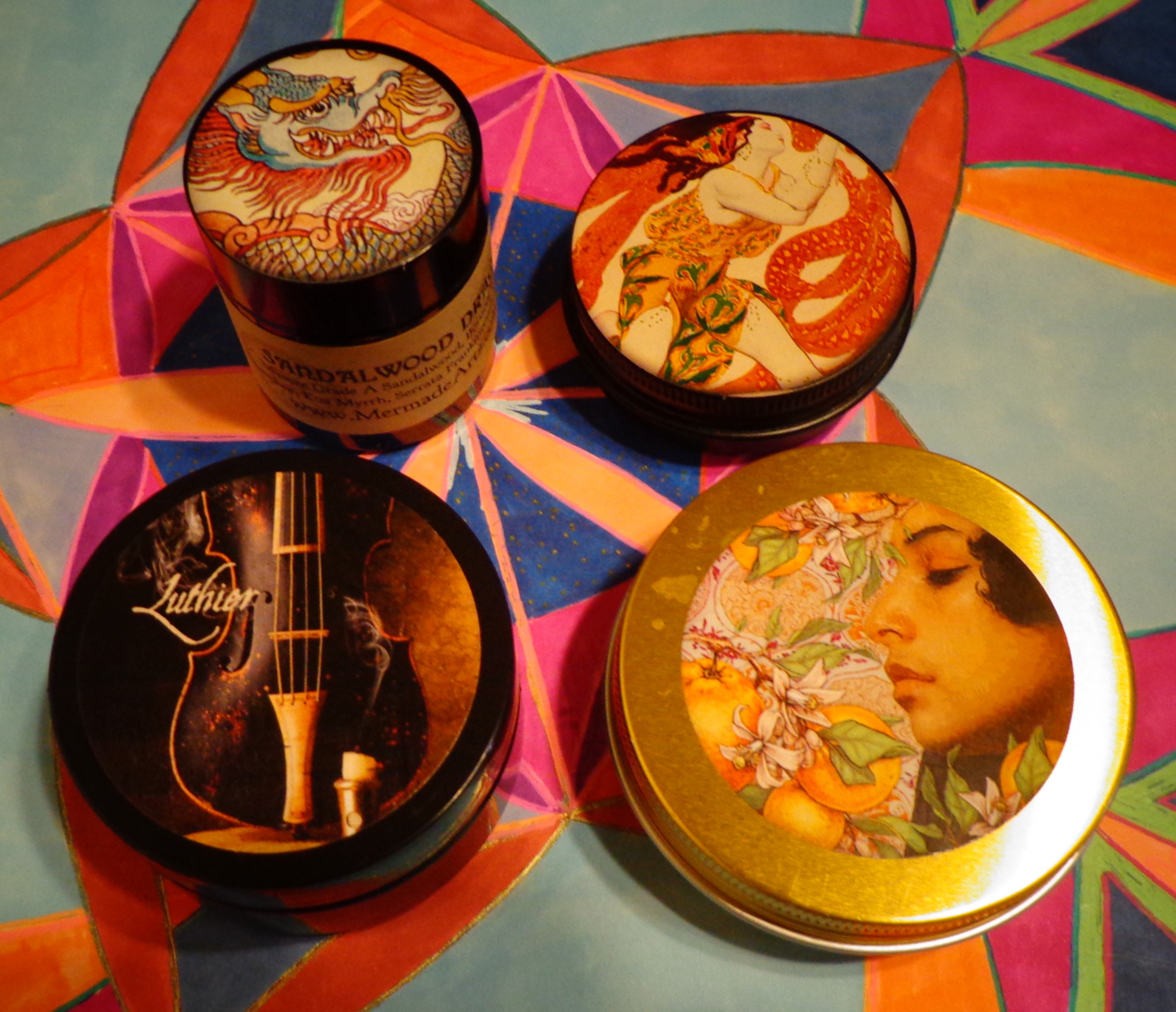
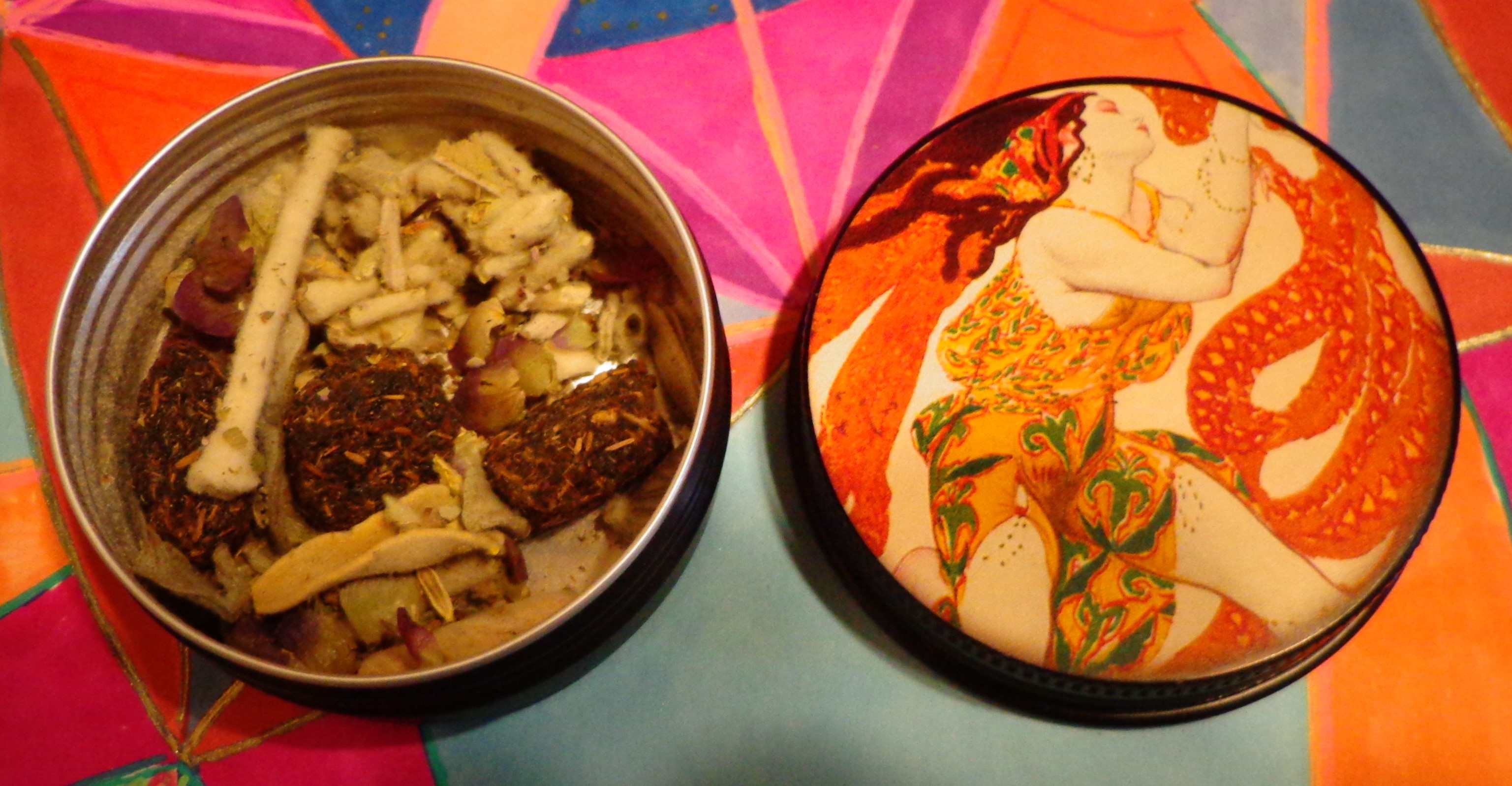 Before I took a look at the ingredients list of
Before I took a look at the ingredients list of 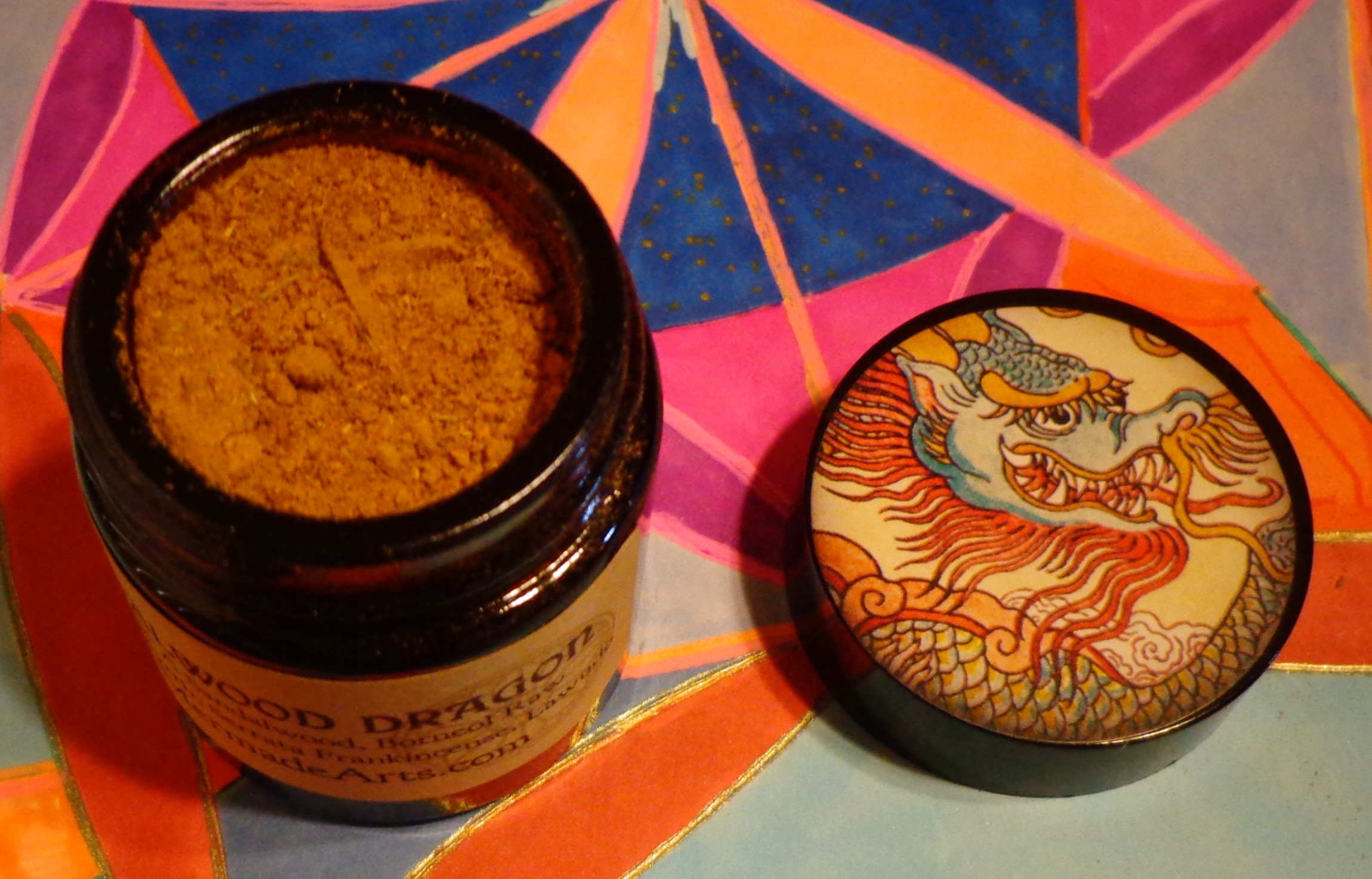 I reviewed a previous vintage of
I reviewed a previous vintage of 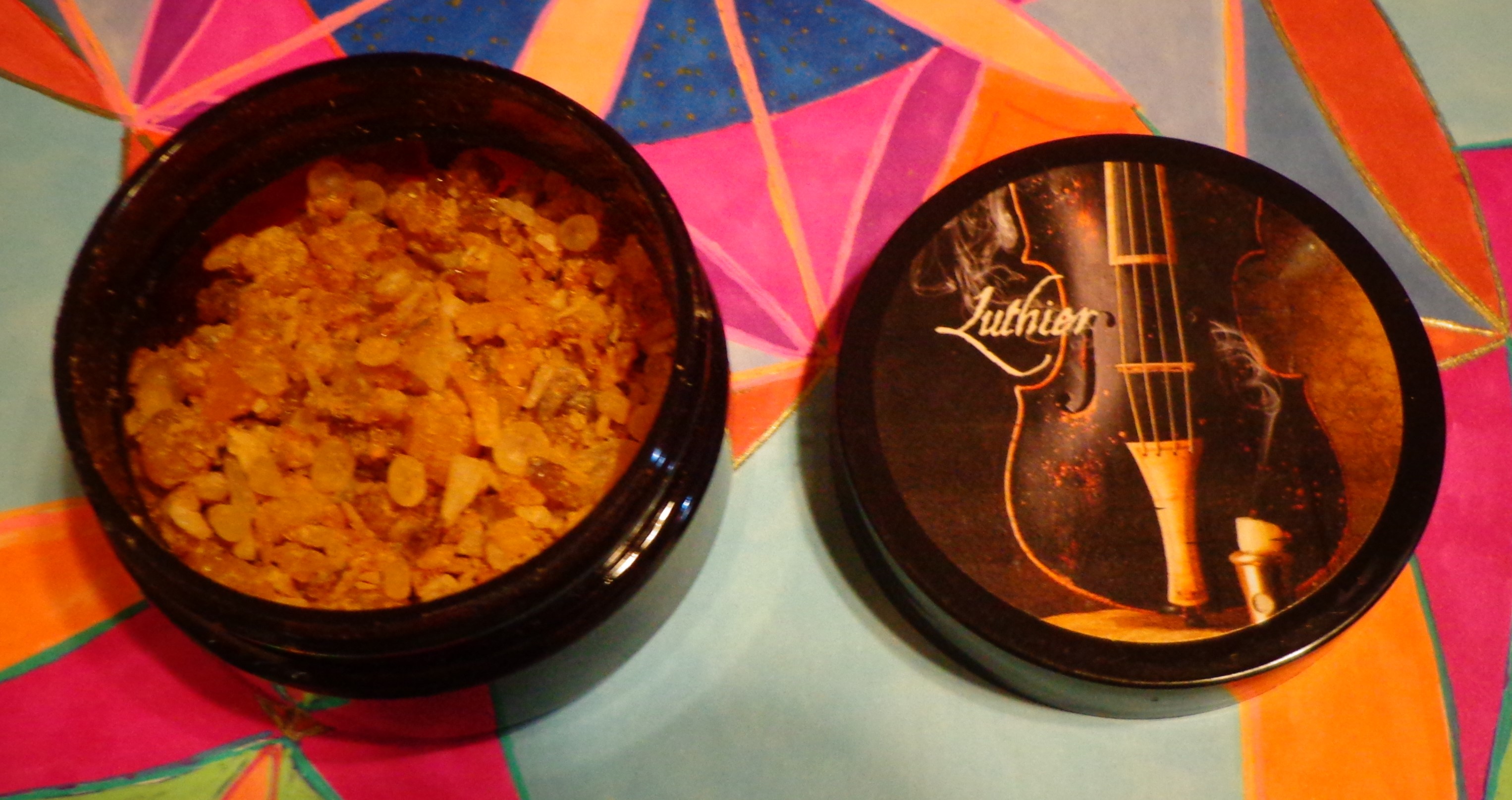 When I was young I used to bike to a record store that was next door to another store that sold stringed instruments. I wasn’t reminded of it until I first heated
When I was young I used to bike to a record store that was next door to another store that sold stringed instruments. I wasn’t reminded of it until I first heated 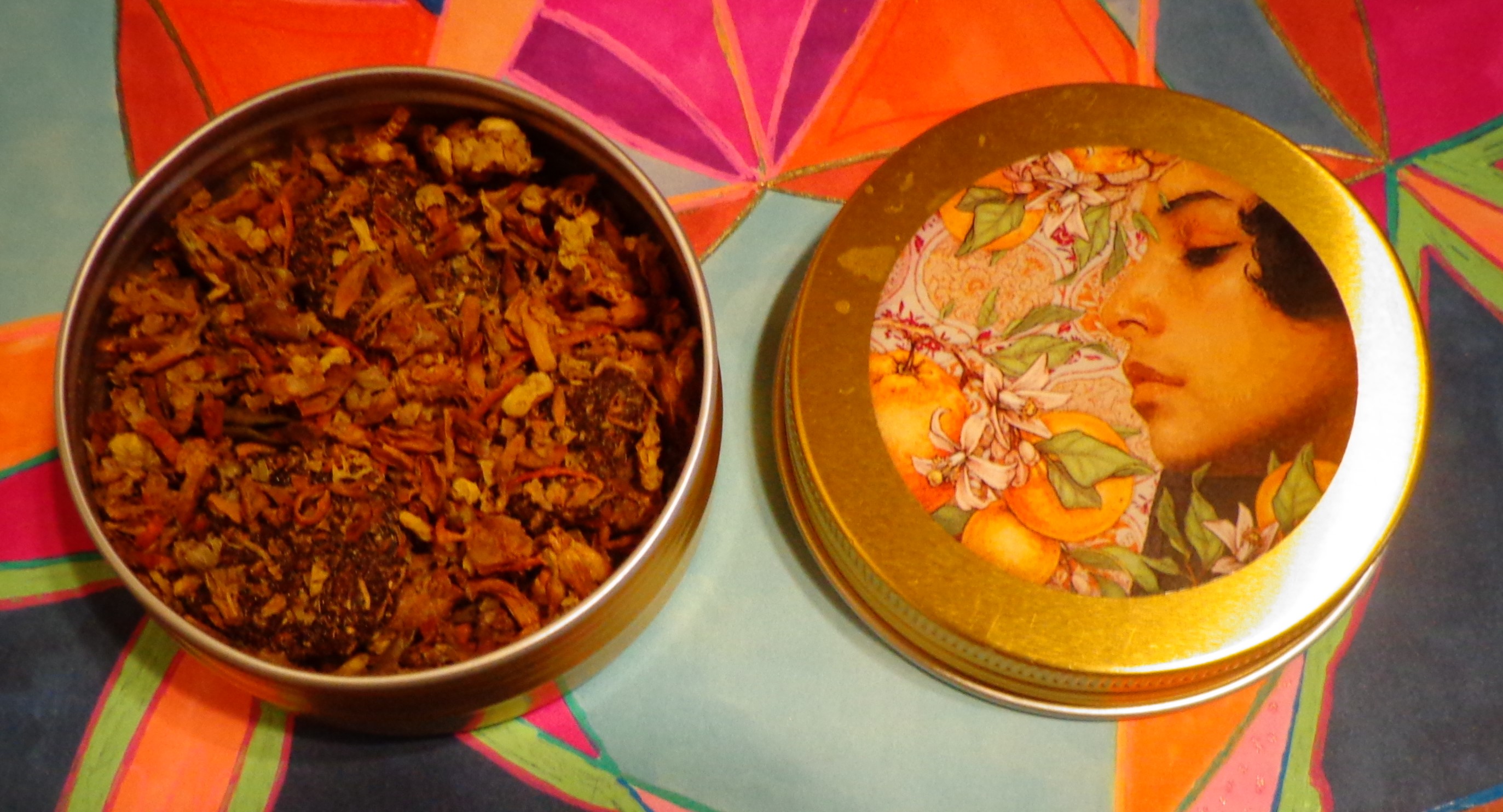 I would have probably liked
I would have probably liked 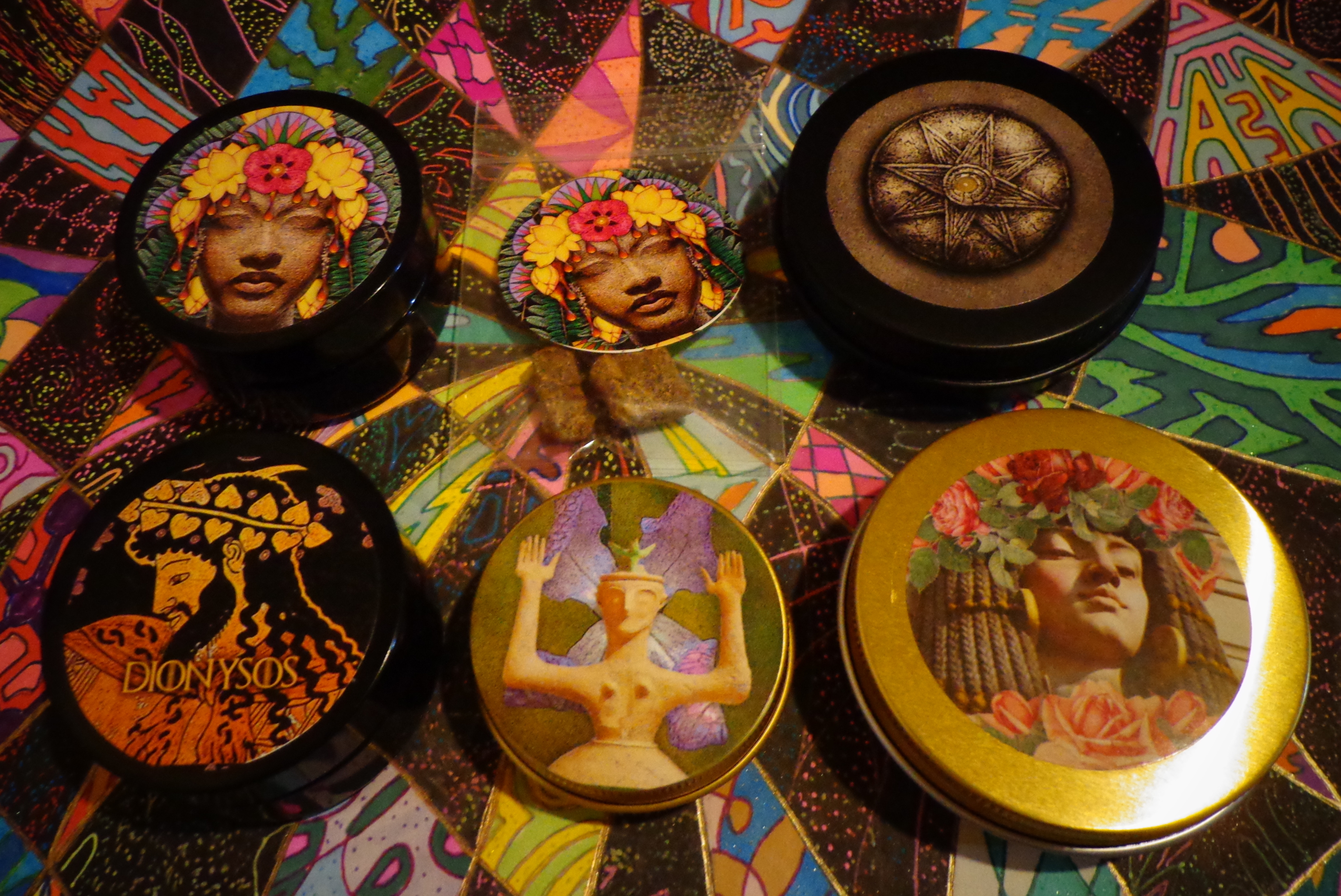 It seems like with the new kyphi mechanism in play that there’s been a substantial creative outburst at Mermade in the winter months. Combine that with ORS being in something of a downtime, it can be really hard to keep up and deeply go into some of these new and wonderful scents that Katlyn has been whipping up in winter months, so I thought I’d do my best to try and do some sort of overview to catch up on some things. As I’ve mentioned before, the catalog window for a lot of Mermade goodies is short and often ORS reviews can shorten them a bit more, and even when I start a review page in draft, I have to keep tabs on what is still live or not by the time I’m ready to publish something. And this too, of course, goes for the Espirit de la Nature incenses that show up. It’s often like watching a car zip by.
It seems like with the new kyphi mechanism in play that there’s been a substantial creative outburst at Mermade in the winter months. Combine that with ORS being in something of a downtime, it can be really hard to keep up and deeply go into some of these new and wonderful scents that Katlyn has been whipping up in winter months, so I thought I’d do my best to try and do some sort of overview to catch up on some things. As I’ve mentioned before, the catalog window for a lot of Mermade goodies is short and often ORS reviews can shorten them a bit more, and even when I start a review page in draft, I have to keep tabs on what is still live or not by the time I’m ready to publish something. And this too, of course, goes for the Espirit de la Nature incenses that show up. It’s often like watching a car zip by.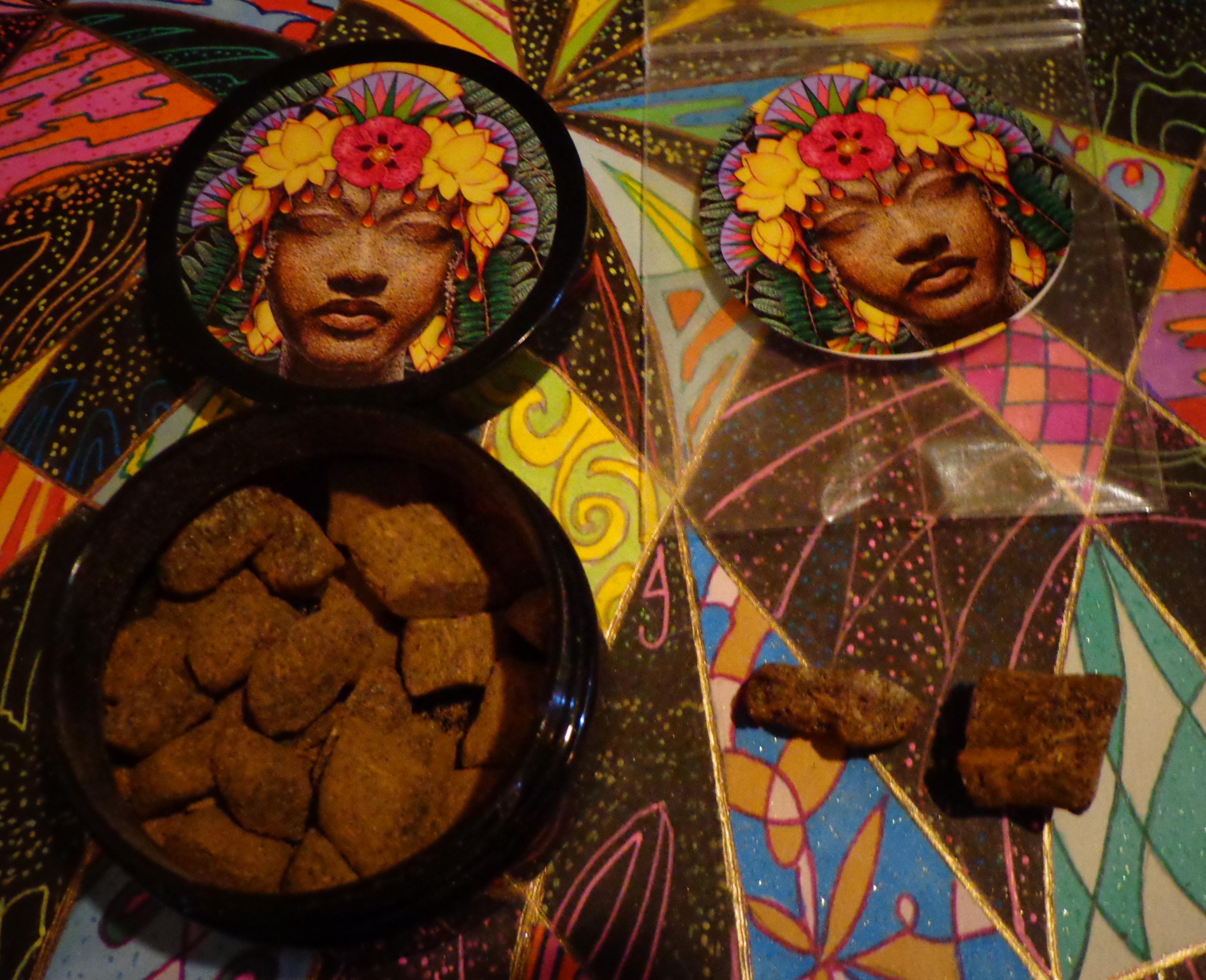 So let’s start with the Mermade kyphis. I covered Kyphi #2, Goddess Temple,
So let’s start with the Mermade kyphis. I covered Kyphi #2, Goddess Temple, 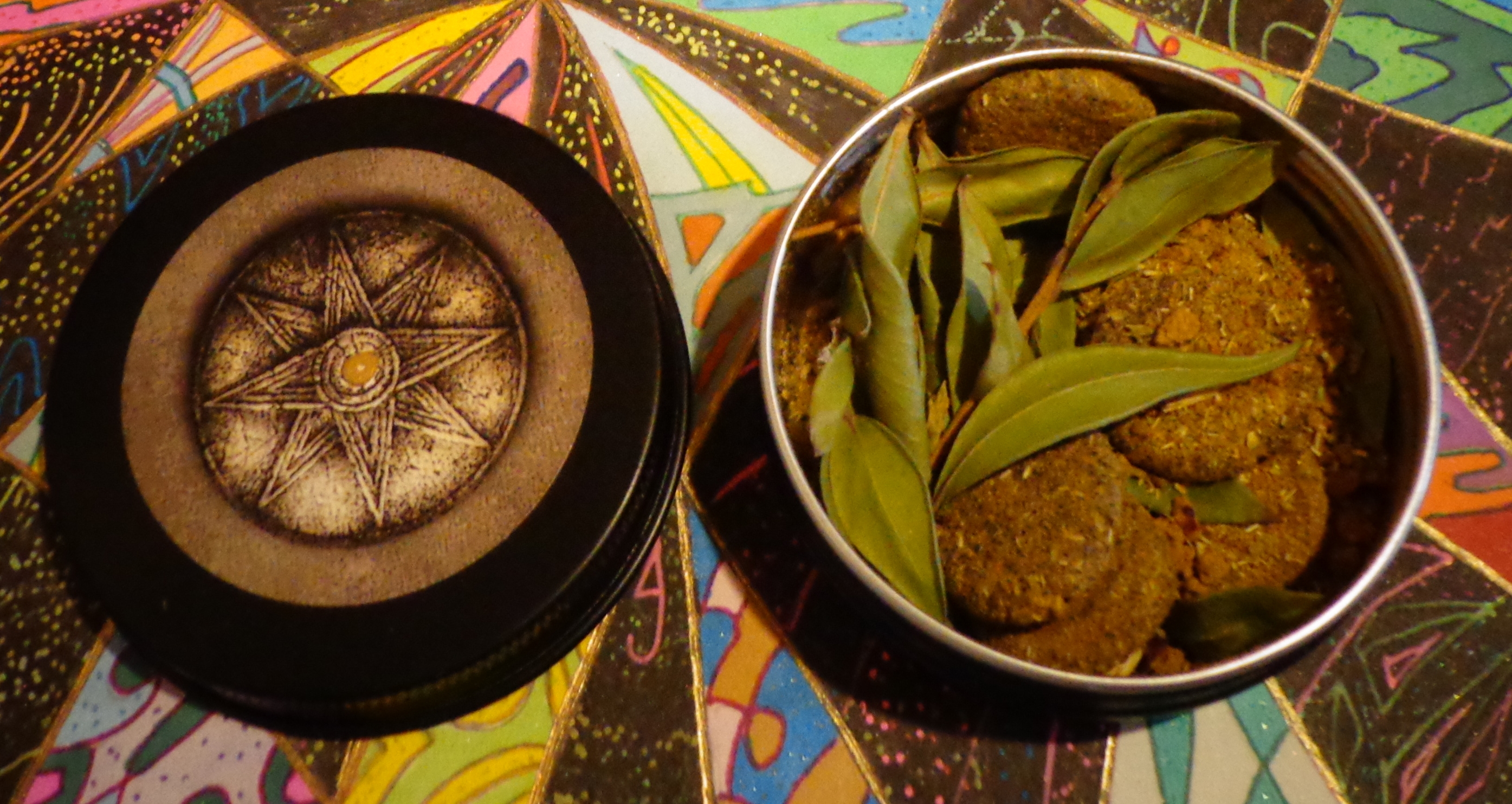 Another project Katlyn is working on is “incense cakes.” There are three different ones that are all very recent,
Another project Katlyn is working on is “incense cakes.” There are three different ones that are all very recent, 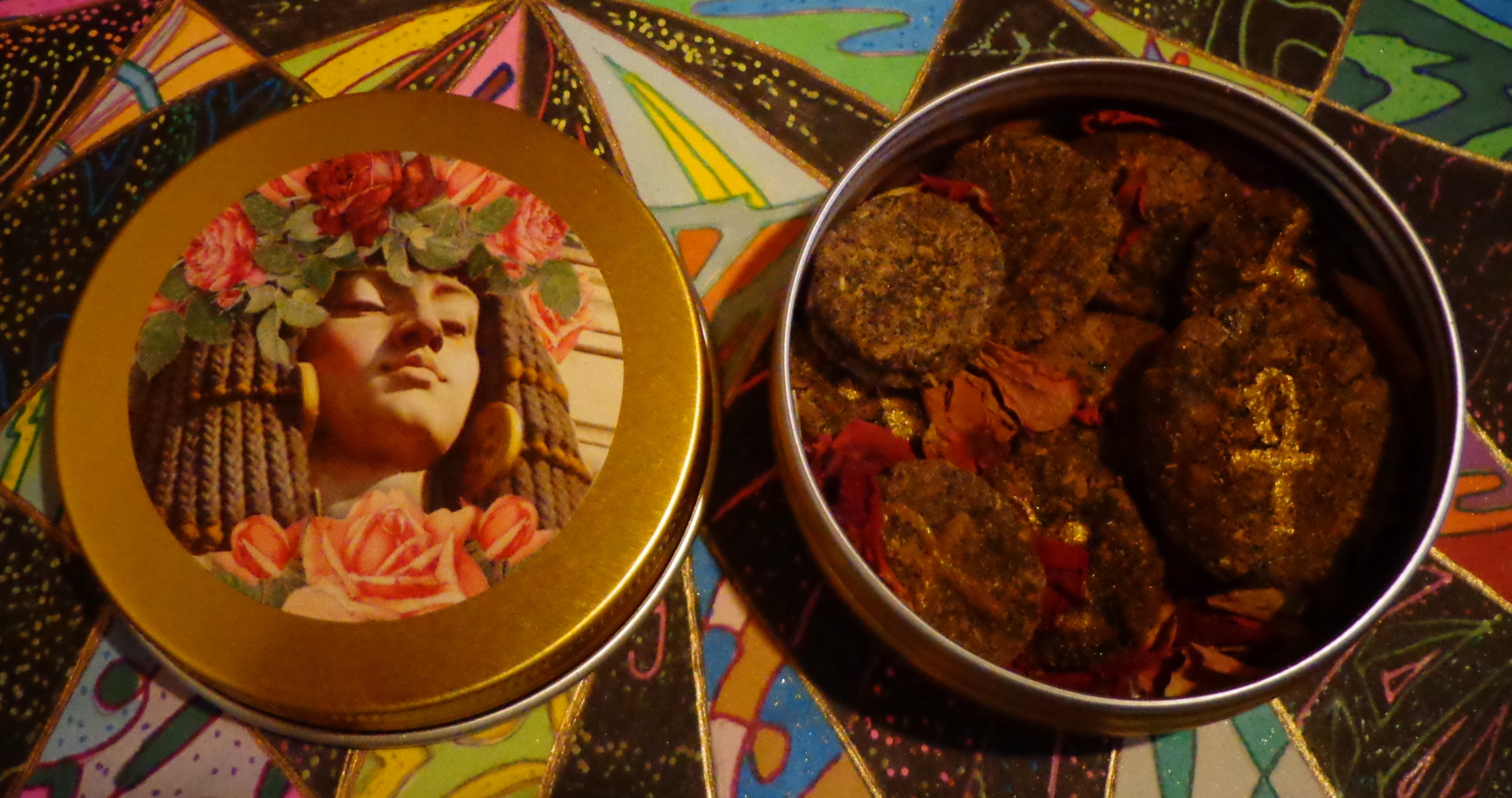 Rose of Isis is a bit more straight forward a blend, with the rose and sandalwood mix out in front. The rose comes from three different absolutes, and the sandalwood is the quality Mysore, but in addition there’s Sahul myrrh, Saigon cinnamon, Hougary frankincense, and benzoin; the mix dusted with agarwood powder. I’ve long understood Katlyn to have a really deep connection with Isis energy and have experienced a number of her crafts in this vein both on and off the market to know she is a vessel for it. The rose here is lovely and powerful, redolent even in the fresh tin, in the way that a friendly rose absolute can lead to it being a bit like valentine’s day candy. But there’s not just that element, but a really genuine scent of the actual rose flower that is paired with that. As the heat continues the rose note will tend to fade into the background more, with the myrrh and cinnamon comng in louder towards the late heat. The sandalwood seems a bit milder than you might expect, mostly due to the powerful rose front, but it tends to tie everything together in the background.
Rose of Isis is a bit more straight forward a blend, with the rose and sandalwood mix out in front. The rose comes from three different absolutes, and the sandalwood is the quality Mysore, but in addition there’s Sahul myrrh, Saigon cinnamon, Hougary frankincense, and benzoin; the mix dusted with agarwood powder. I’ve long understood Katlyn to have a really deep connection with Isis energy and have experienced a number of her crafts in this vein both on and off the market to know she is a vessel for it. The rose here is lovely and powerful, redolent even in the fresh tin, in the way that a friendly rose absolute can lead to it being a bit like valentine’s day candy. But there’s not just that element, but a really genuine scent of the actual rose flower that is paired with that. As the heat continues the rose note will tend to fade into the background more, with the myrrh and cinnamon comng in louder towards the late heat. The sandalwood seems a bit milder than you might expect, mostly due to the powerful rose front, but it tends to tie everything together in the background.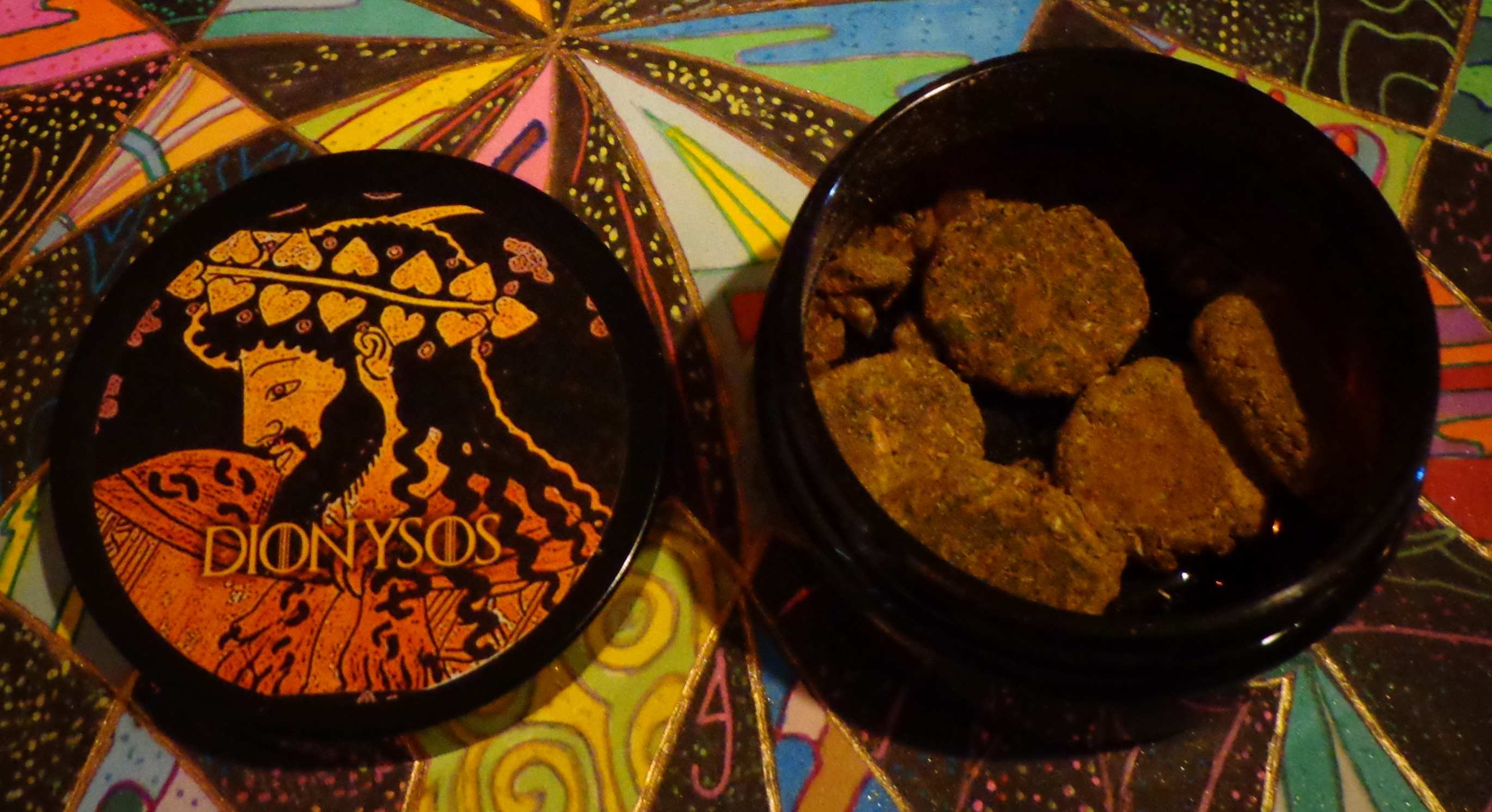 Dionysos is something of an incense cake version of one of Katlyn’s older incenses with the same name. In fact
Dionysos is something of an incense cake version of one of Katlyn’s older incenses with the same name. In fact 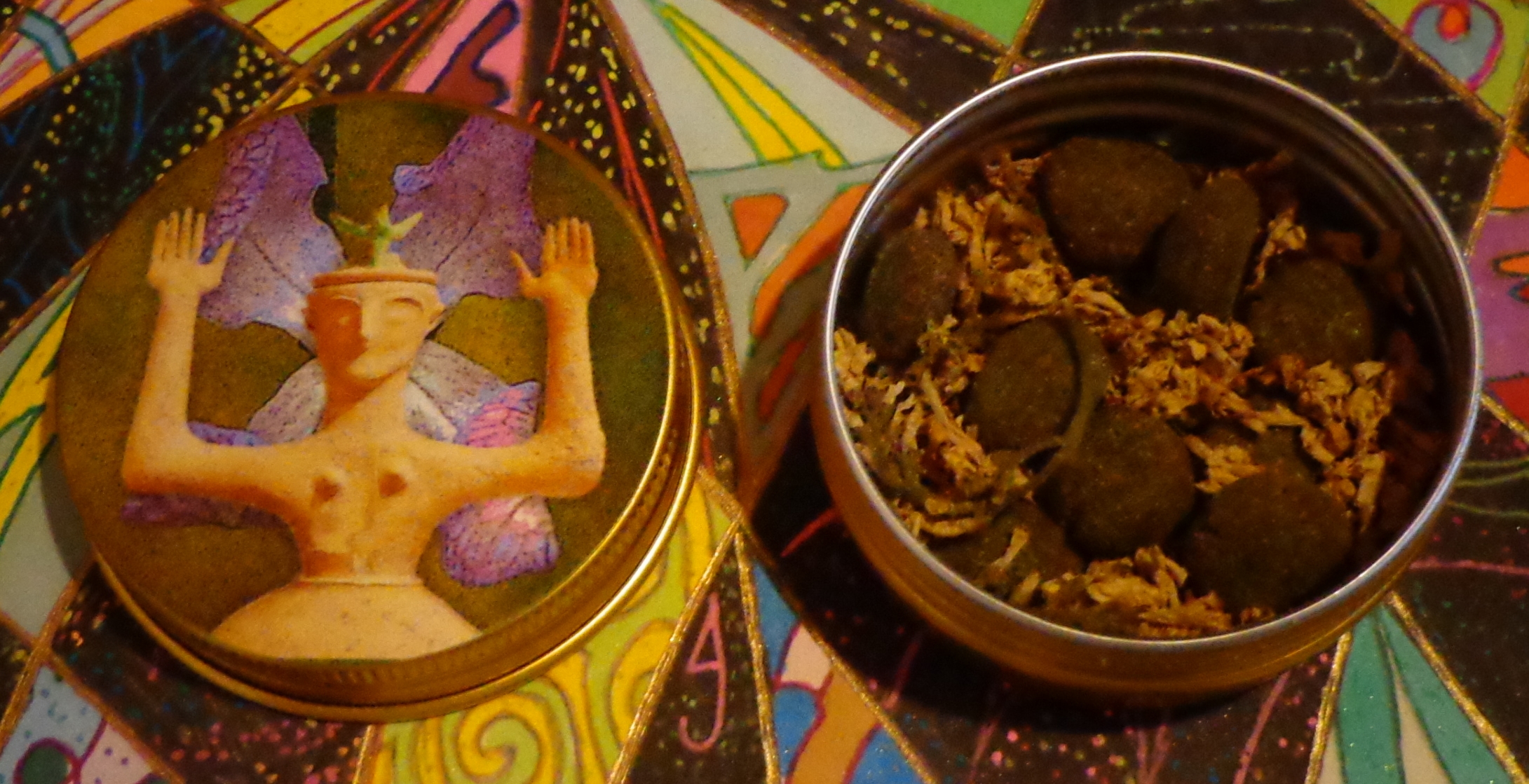 There were also a couple new Encense du Monde incenses in the Mermade catalog of late but one blew out incredibly fast and the other might be gone by the time I get this incense live (3 left! Going, going..). This last one left (well they both were!),
There were also a couple new Encense du Monde incenses in the Mermade catalog of late but one blew out incredibly fast and the other might be gone by the time I get this incense live (3 left! Going, going..). This last one left (well they both were!), 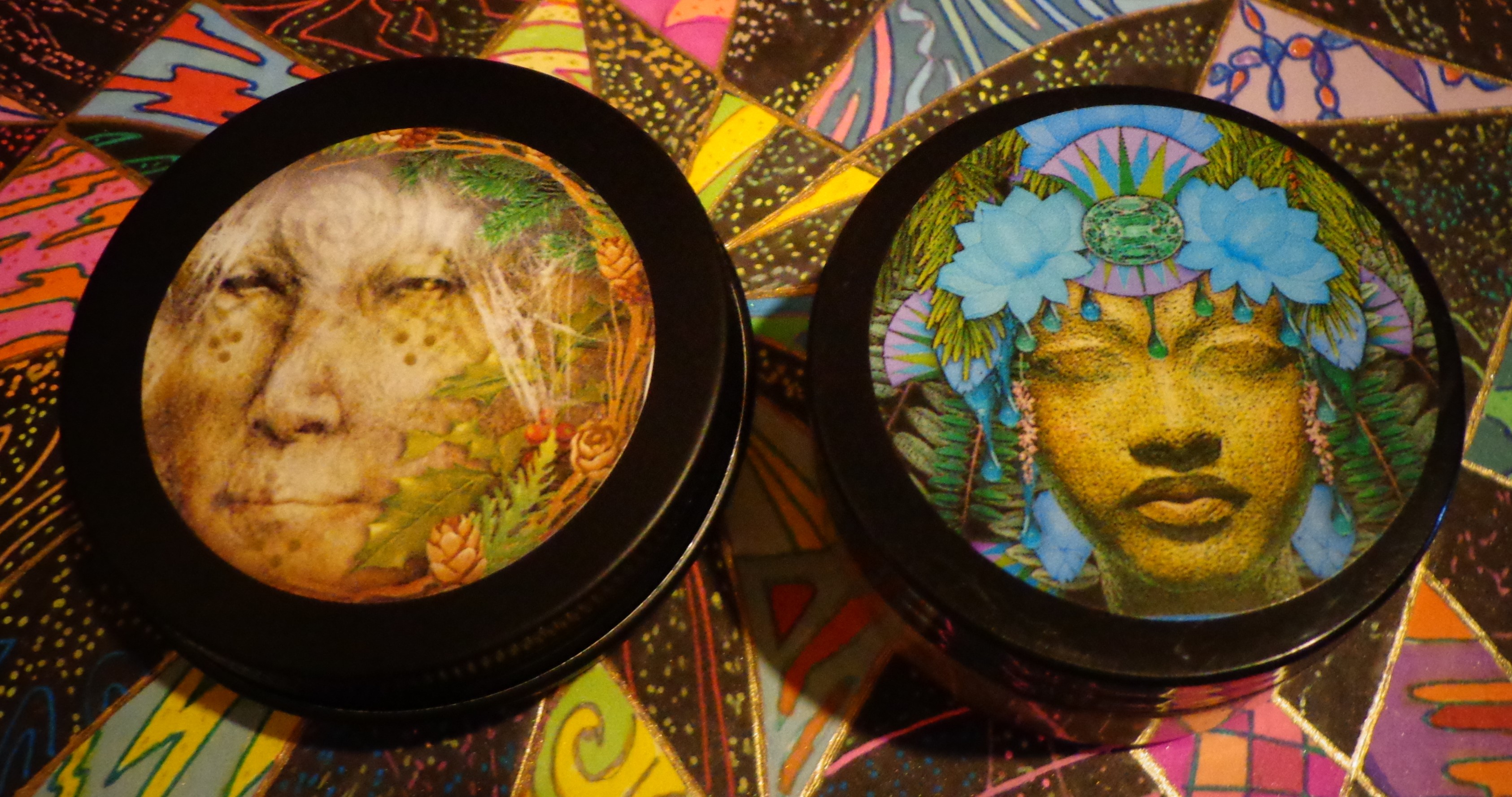 So right about when we turned to ORS holiday time, Mermade Magickal Arts went all festive on us and released a bunch of really yummy new treats. I love all of Katlyn’s work but I might have particular favorites in the whole axis of evergreen/green/winter seasonal incenses that she does and so it was impossible for me not to make an order, and then when I got everything wonderful in, I’m like oh my god how do I share what I am experiencing and write about these on holiday time when a lot of Mermade blends rocket out the door in a few weeks time (or sometimes before I can even write anything). Well I’ll give at least these first two a shot, and although this might not be up to usual review standards, for sure these incenses are up to the usual high Mermade (and Esprit de la Nature) standards. These are two really wonderful incenses.
So right about when we turned to ORS holiday time, Mermade Magickal Arts went all festive on us and released a bunch of really yummy new treats. I love all of Katlyn’s work but I might have particular favorites in the whole axis of evergreen/green/winter seasonal incenses that she does and so it was impossible for me not to make an order, and then when I got everything wonderful in, I’m like oh my god how do I share what I am experiencing and write about these on holiday time when a lot of Mermade blends rocket out the door in a few weeks time (or sometimes before I can even write anything). Well I’ll give at least these first two a shot, and although this might not be up to usual review standards, for sure these incenses are up to the usual high Mermade (and Esprit de la Nature) standards. These are two really wonderful incenses.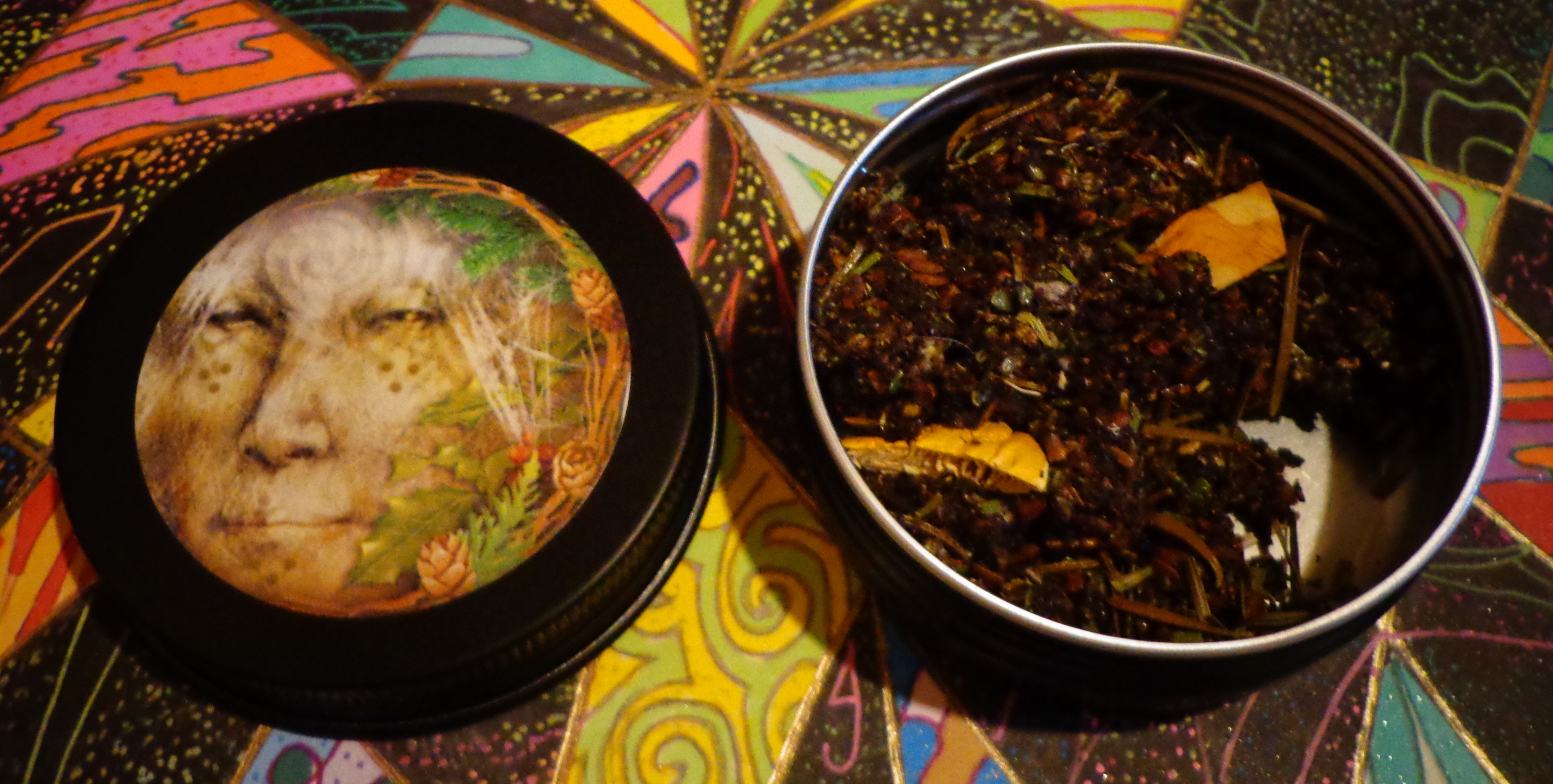 But let’s first start with one that a periodical and greatly admired contributor to the Mermade catalog has created. As many may be aware of, Be en Foret of Esprit de La Nature is also one of the great artists of heatable incense out there and her new blend
But let’s first start with one that a periodical and greatly admired contributor to the Mermade catalog has created. As many may be aware of, Be en Foret of Esprit de La Nature is also one of the great artists of heatable incense out there and her new blend 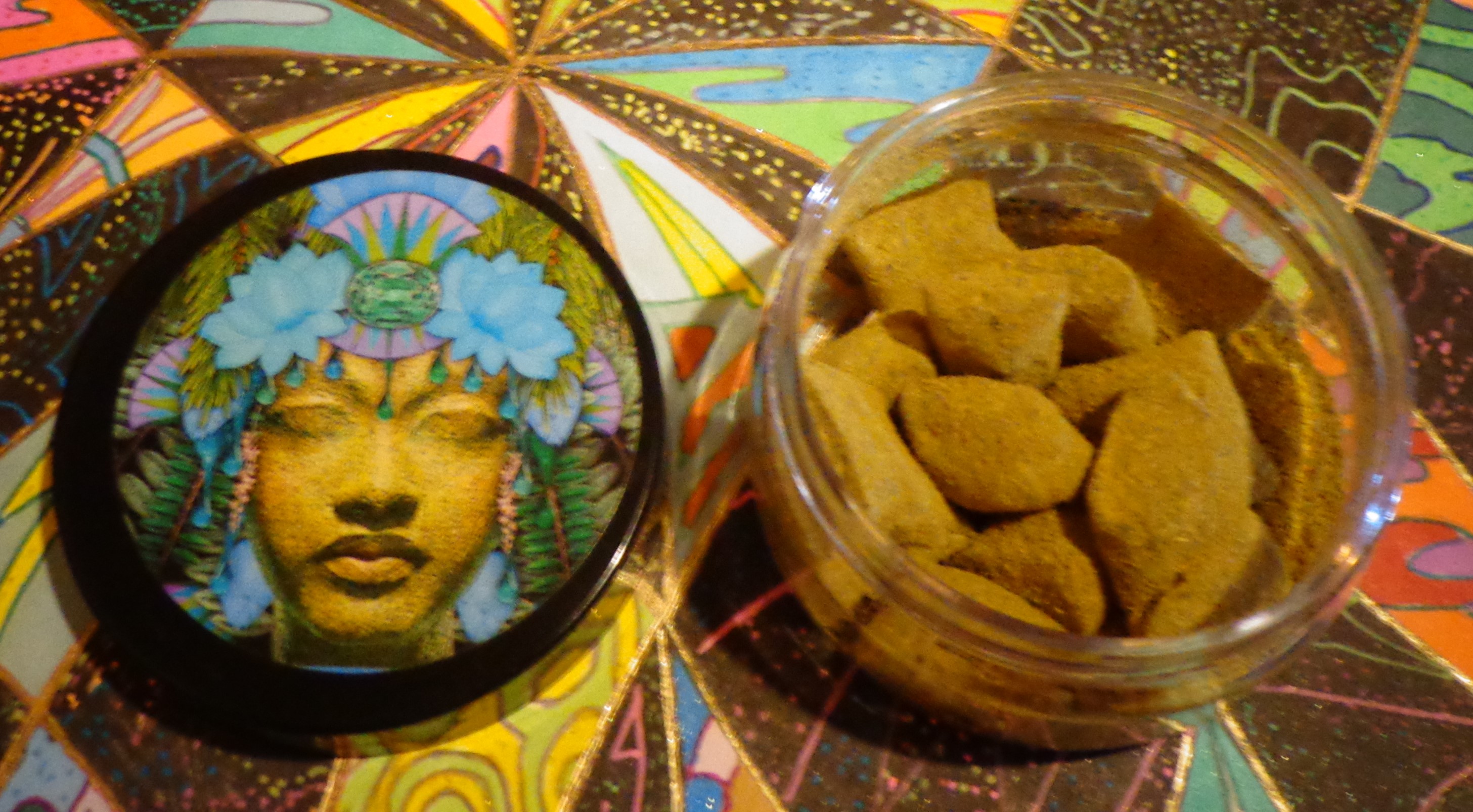 Sort of in the reverse (or maybe inverse?) direction of this is Katlyn’s
Sort of in the reverse (or maybe inverse?) direction of this is Katlyn’s
You must be logged in to post a comment.